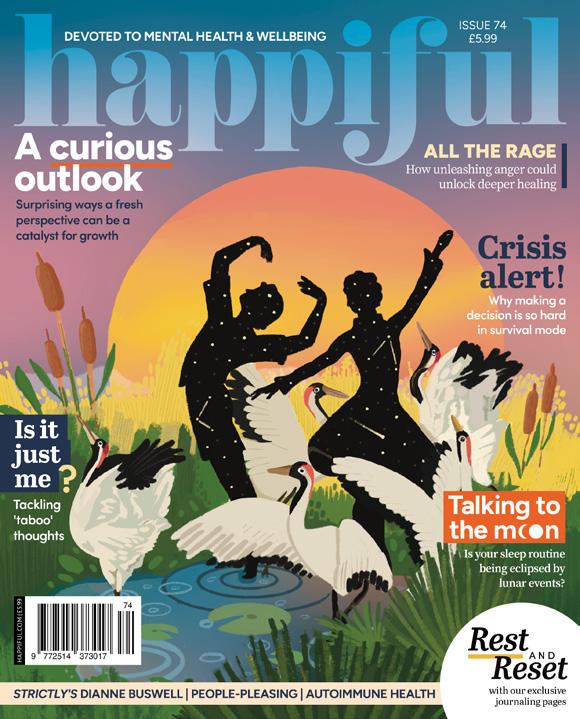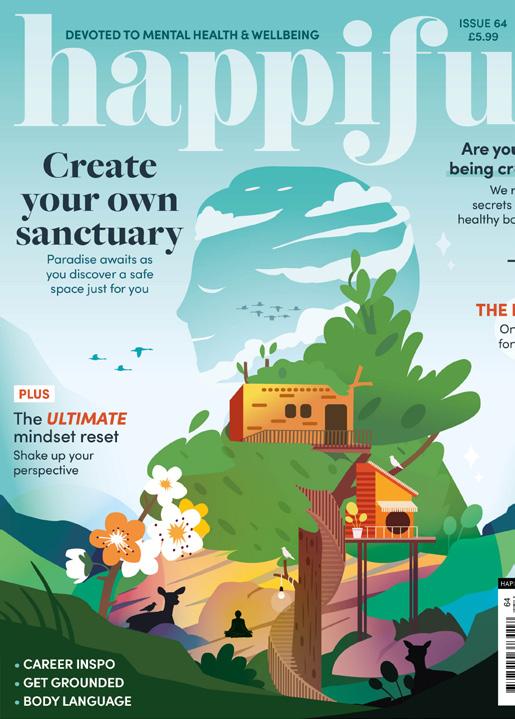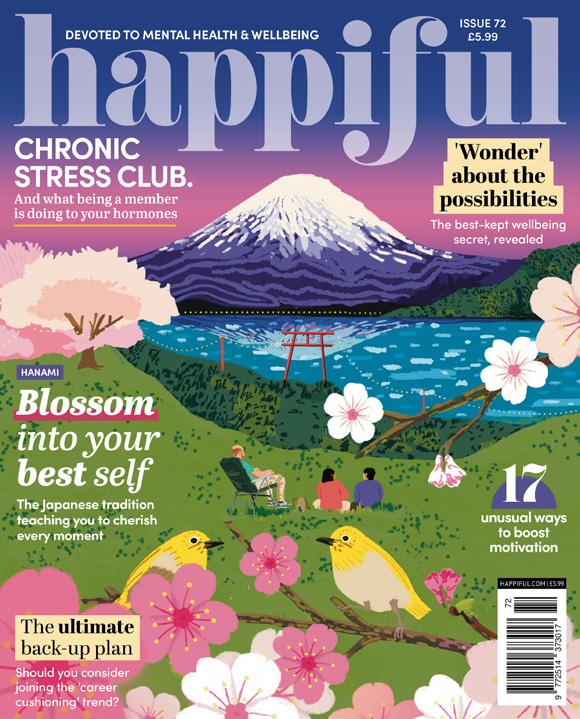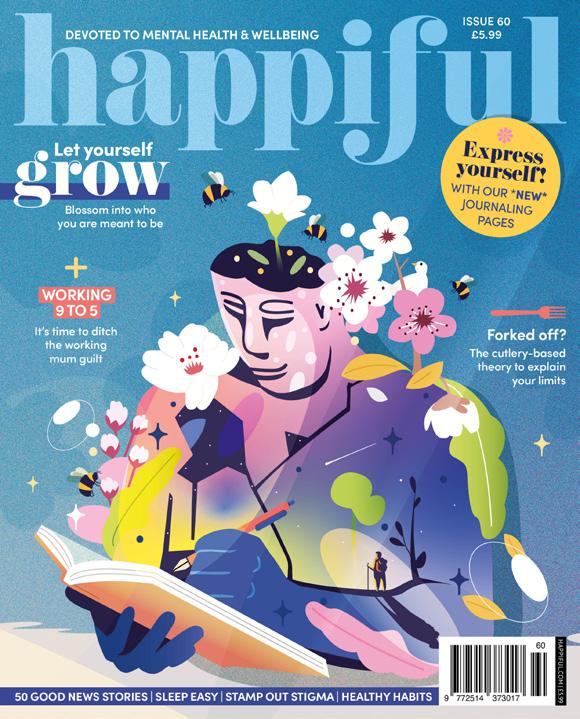
 Photograph | Mohamed Nohassi
Photograph | Mohamed Nohassi
“Each of us is more than the worst thing we’ve ever done BRYAN STEVENSON, JUST MERCY


 Photograph | Mohamed Nohassi
Photograph | Mohamed Nohassi
“Each of us is more than the worst thing we’ve ever done BRYAN STEVENSON, JUST MERCY
Have you ever had a vision of where you want to see yourself, and become so focused on that future image that it practically consumes you?
You tell yourself you’ll finally have the answers to all your problems. When you achieve it, then you’ll be happy.

But what if you reach your goal, and it’s not this earth-shattering moment where everything falls perfectly into place? What if the moment passes, and you’re left thinking: what next?
It’s a concept I’ve heard athletes, in particular, discussing. The devotion to training, living for an ambition, your every thought occupied by it. But whether it’s a gold medal, a world championship, or raising a cup to a cheering crowd, when you’re at the top of a podium it can feel like the only way is down.
All this to say, there’s nothing wrong with having a long-term dream. But don’t let that desire for a picture-perfect future stop you from enjoying the beauty in front of you right now.


The disillusionment of delayed happiness is the idea that denying ourselves joy now will give a greater reward down the line. But one thing that is certain in life is that time is never guaranteed. You never know what tomorrow will bring, so don’t waste a second.
Allow yourself to feel, to breathe, to live, to love. To enjoy doing nothing. To relish doing something. To appreciate the process. To value the journey.
That’s not to say you need to deny your emotions or pretend to feel something you don’t. Just that happiness is fleeting, and doesn’t have to be ‘earned’. It’s an emotion, a moment, a person, a place. So, when it enters your life, clasp it tightly and hold on as long as you can.
From our feature on deferred happiness on p16, to embracing the comfort of a familiar place on p80, we’re all about appreciating the moment, and following your heart.
Our piece on grieving through pet loss on p54 is a supportive reminder to not shy away from your unconditional love. And in those moments when emotions take over, our p51 article on heart rate anxiety offers practical tips to help you regain control.
Time is the most precious thing we have. Allow yourself to be present, and remember that ‘this too shall pass’.
Whatever pain, hurt, anguish, or sorrow is in your heart, know that you are seen. And you still deserve a moment of joy amongst it all.
Happy reading,
At Happiful, inclusivity, representation, and creating a happier, healthier society are at the forefront of our mission. To find out more about our social and environmental pledges, visit happiful.com/pledges





25 Getting the ick
What could the things putting us off romantic interests be telling us?
40 Family dynamics
How do they influence our lives? Our expert answers your questions
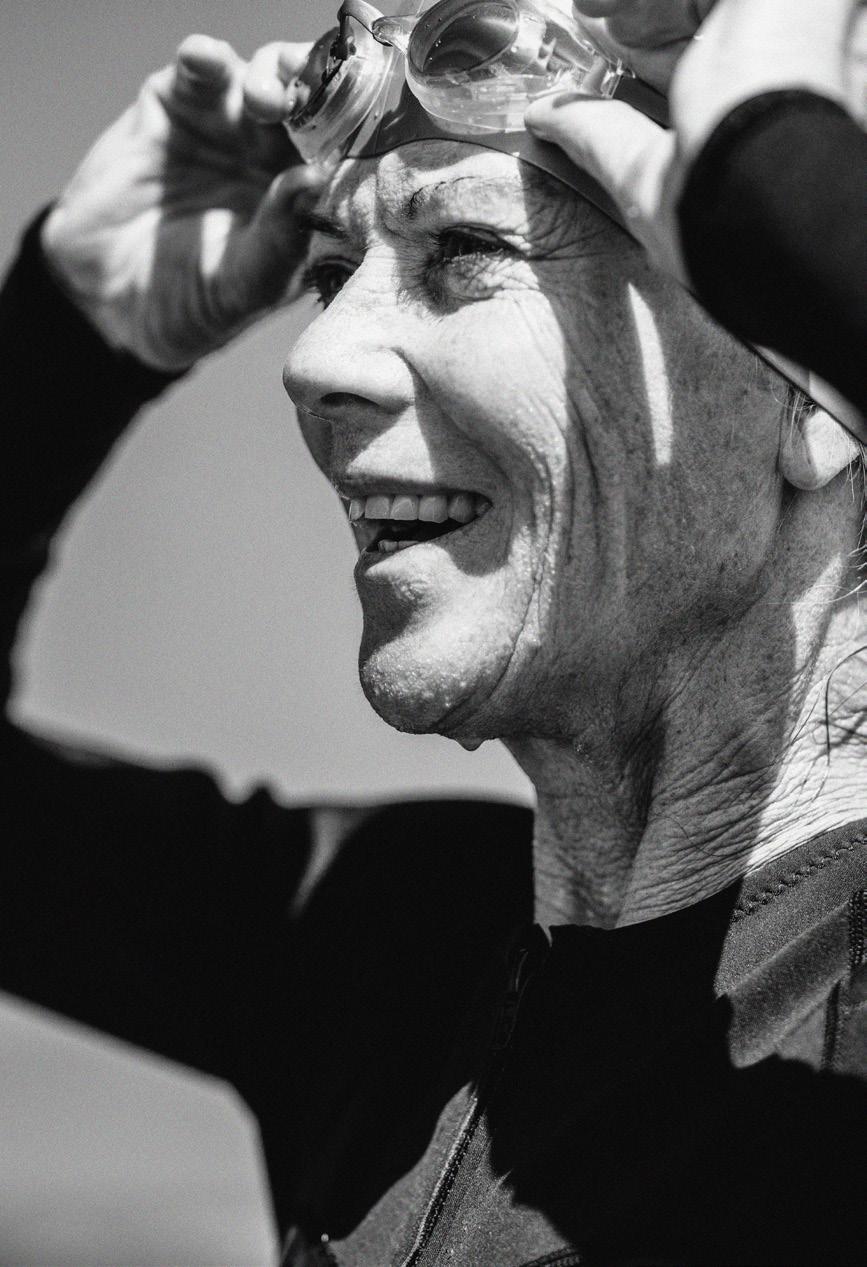
46 Meeting milestones
Michelle Elman explores feelings around turning 30
72 Put yourself in their shoes
Could mentalisation help us form deeper relationships?
74 No more Mr nice guy
Is it time to let people-pleasing go?
20 Pass it on
32 Autumnal spice
Keep it cosy with these healthy recipes
34 Navigating GP appointments

How to get the most out of them
51 Racing heart?
Learn techniques to help you reclaim control over an anxious heart

65 Eating for IBD
Find a diet that works for you
Every issue of Happiful is reviewed by an accredited counsellor, to ensure we deliver the highest quality content while handling topics sensitively.
80 Back again
Too often in life, we become attached to a goal that we think will bring us happiness and success, only to discover that the feeling was short-lived or unfulfilling. Check out p16 for a wonderful exploration of this concept, and how to nurture a more fulfilled life. The true path is connecting with life, in each moment, and being present. Life is much more than a goaldriven existence. It is a process to be experienced and felt.
RAV SEKHON
BA MA MBACP (Accred)
Rav is a counsellor and psychotherapist with more than 10 years' experience.

Meet the team of experts providing information, guidance, and insight throughout this issue
BA (Hons) Dip. NLP AC MHFA
Kieran is a youth development coach and mentor.

KATIE EDWARDS
DipION mBANT CNHCreg mIFM
Katie is a nutritionist, functional medicine practitioner and embodiment coach.


BSc (Hons) MSc PsychD
Stephanie is a principal counselling psychologist specialising in trauma.

CLEMMIE OLIVER
MSc ANutr
Clemmie is an IBD specialist nutritionist.
CHLOE GOSIEWSKI
AdvDip.LC Dip.PP MPNLP
Chloe is a travel and professional marketing coach, helping people meet their goals.
EDITORIAL
Rebecca Thair | Editor-in-Chief
Kathryn Wheeler | Features Editor
Lauren Bromley-Bird | Editorial Assistant
BSc (HONS) NLP
Gordon is a life coach specialising in happiness and wellbeing.

ANITA GOHIL-THORP

LLB (Hons) Dip L.C PCC ACC ICF FRSA
Anita is a personal, career, and diversity coach, mentor, and trainer.
MSc Dip ClinHyp
Juliet is a hypnotherapist with an interest in the neuroscientific.

GEMMA HOLMES
DipCHyp HPD MNLP
Gemma is a QCH therapist and confidence coach.

NINA JELLINEK
PGDip PGCert MNCPS
Nina is an adult and young person’s counsellor, and a counselling supervisor.
Join
Are you a wellbeing expert with valuable insight to share? Happiful professional membership includes opportunities to be featured in our award-winning magazine. Discover how to join by emailing us at professionals@happiful.com

Bonnie Evie Gifford, Kat Nicholls, Samantha Redgrave-Hogg | Senior Writers
Becky Banham | Content & Marketing Officer
Michelle Elman, Kieran Townsend | Columnists
Ellen Lees | Head of Content
Natalie Holmes | Sub-Editor
Rav Sekhon | Expert Advisor
ART & DESIGN
Amy-Jean Burns | Head of Product & Marketing


Charlotte Noel | Creative Lead
Rosan Magar | Illustrator
COMMUNICATIONS
Alice Greedus | PR Manager
Emily Whitton | Marketing Coordinator
CONTRIBUTORS

Tanith Carey, Caroline Butterwick, Fiona Fletcher Reid, Luke Clark, Rosie Cappuccino, Georgina Sturmer, Nina Jellinek, Noah Goldhirsh, Juliet Hollingsworth, Rochelle Hanslow, Jenna Farmer, Malvika Padin, Katie Conibear
SPECIAL THANKS
Gordon McCrorie, Gemma Holmes, Anita Gohil-Thorp, Katie Edwards, Clemmie Oliver, Georgina Sturmer, Dr Stephanie Okwu, Chloe Gosiewski, Keith Howitt
MANAGEMENT
Aimi Maunders | Director & Co-Founder
Emma Hursey | Director & Co-Founder
Paul Maunders | Director & Co-Founder
SUBSCRIPTIONS
For new orders and back orders, visit shop.happiful.com, or call Newsstand on +44 (0)1227 277 248 or email subenquiries@newsstand.co.uk
CONTACT
Happiful, c/o Memiah, Building B, Riverside Way, Camberley, Surrey, GU15 3YL Email us at hello@happiful.com
HAPPIFUL FAMILY
Helping you find the help you need. Counselling Directory, Life Coach Directory, Hypnotherapy Directory, Nutritionist Resource, Therapy Directory
From the Lionesses’ Euro 2022 victory to the London Lions’ tour de force of a season, women’s sport has seen phenomenal success lately.
Now, a new study by the London Lions Basketball Club reveals the exciting effect that women’s sports are having on the nation, with a breathtaking 5 million Brits trying a new sport, and 4.2 million attending a women’s sports game for the first time this past year. So, is it any surprise that 56% of those surveyed also believe there needs to be equal coverage of men’s and women’s sports on TV?
That said, it’s not quite a slam dunk for women’s sports yet. One in five of the women surveyed reveal they’ve come up against discrimination or exclusion which deterred them from taking part, and one in four feel that progressing in a sport isn’t realistic due to a lack of relatable role models.

But the manager of the Lions’ women’s team, Vanja Cernivec, seeks to remedy this with grassroots initiatives, such as a series of female-only basketball clinics, each aiming to inspire young girls across the country to take part in basketball. “I’m really proud of the London Lions and 777 for
their commitment to not only elevate women’s sport, but to invest in women, period,” Vanja commented.
Campaigns like these give women the courage and confidence needed to break down barriers and achieve greater parity in sports. Game on! Writing | Samantha Redgrave-Hogg
finds Brits have an appetite for women’s sport


When you think of ways to create strong bones, is your first port of call calcium? It may be our go-to, but it turns out that this isn’t the only thing that can help. To raise awareness, and get us moving, the Royal Osteoporosis Society (ROS) has partnered up with experts from Scottish Ballet to bring the incredible world of dance to those with osteoporosis – and those without – spreading joy and promoting the importance of bone health.
This partnership resulted in an innovative exercise programme called ‘Dance for Your Bones’, which combines the beauty of dance with weight-bearing exercises to help enhance and sustain bone health.
The accompanying film offers stepby-step instructions for a series of moderate-impact graceful and energetic moments, with low-impact alternatives, that can be followed at your own pace, regardless of your ability. These exercises encourage your bones to work harder to support the body’s weight, helping to strengthen bones and slow bone loss.
Sarah Leyland, clinical adviser at the ROS is thrilled about the potential impact of the programme. She says, “Our hope is that ‘Dance for Your Bones’ will motivate more people to take action to improve their bone health through physical activity, and make it a lifelong habit.”
If you’re ready to embark on a journey towards stronger bones and a healthier, happier you, head to theros.org.uk to find out more.
Writing | Lauren Bromley-BirdIf you ever doubt that one person can make a difference, consider this Coventry University student who has been nominated for a national award in recognition of her inspirational wellbeing resources for young mental health patients.
Leanne Howlett retrained as a mental health nurse after leaving her job as a solicitor due to postnatal depression. While on placement with RISE, Coventry and Warwickshire’s mental health service for children and young people, Leanne developed a resource pack with sleep tips, grounding skills, and coping
strategies to ease the discharge process, empowering patients to feel ready to take the next steps.
This move was inspired by her own experience of being discharged. “I was worried about being on my own and what was next, because I wanted that security blanket of the health practitioner,” she reflects.
Going that extra mile during what can feel like an unsettling time of change for patients, Leanne actively put into practice what she’d learnt while studying, to make a change in the lives of so many young people. Honouring
‘Workplace wellbeing’ has become somewhat of a buzzphrase in recent years, as we’re increasingly aware of the ways that our work lives affect our health and happiness. Now a new study from wellbeing app Headspace has found that 83% of UK employees believe that their employer is doing enough to support their mental health –increasing from 65% in 2022. Today, the marketing, media, and advertising sector boast the highest levels of satisfaction, with 92% of employees stating that their employers are supporting their mental health at work.
But other sectors have also seen a rise in satisfaction. In fact, 56% of retail employees reported feeling better about their mental health compared to last year, and 66% of construction workers said that the things on offer were having a positive impact on their mental health.
“Workplace mental health continues to be a top three business priority, with employees and CEOs experiencing frequent levels of stress due to market uncertainty and growing workplace pressures,” explains Russell Glass, CEO at Headspace. “In response, companies must not only ensure they have robust
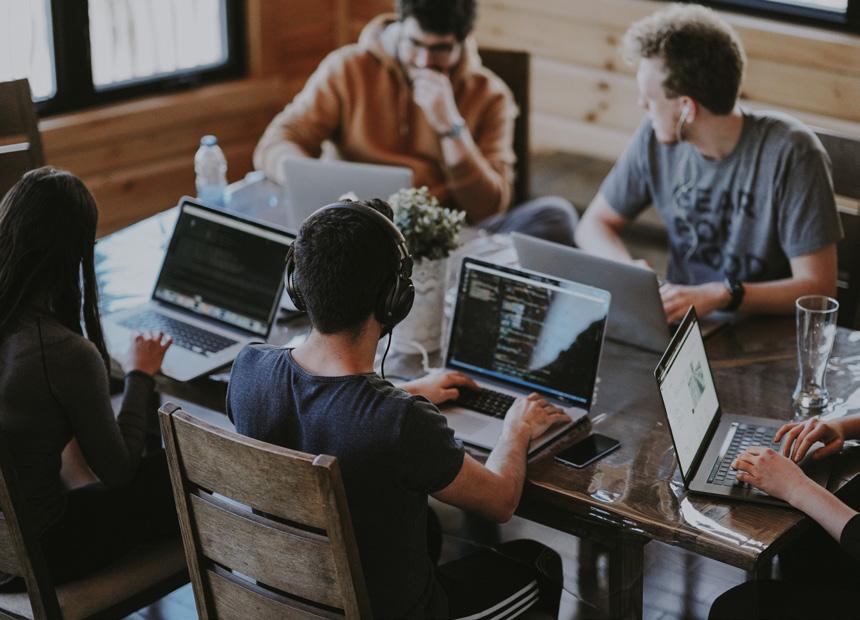
the achievement, RISE lead nurse Nicola Evans says, “The RISE Discharge Wellbeing Pack will transform daily nursing practice. It will support in celebrating the progress and futures of the children and young people who have accessed our service.”
Making footprints for others to follow, Leanne hopes she can spur students to know they can bring about a change because of their actions. A good reminder for us all to have the courage to make a difference in the world – no matter how big or small.
Writing | Samantha Redgrave-Hoggmental health and wellbeing
programmes in place, but that their leaders are tending to their own mental health, fostering open conversations with their teams, and helping to reduce stigma in the workplace.”
Let’s continue the conversation, and make workplace wellbeing schemes work for us.
Writing | Kathryn Wheeler
The UN recently passed the UN High Seas Treaty to protect international waters from damaging activities
Dwayne ‘the Rock’ Johnson made a sevenfigure donation to the SAGAFTRA relief fund amid strikes
There’s been some welcome news in the fight against plastic pollution, as scientists from the Lawrence Berkeley National Laboratory, in California, have developed a revolutionary new plastic that can be recycled an infinite amount of times! Whereas the majority of traditional plastics can’t be recycled at all, and can take up to 500 years to decompose, the new material, called poly(diketoenamine) or PDK, is predominantly ‘biobased’, which is what allows it to be deconstructed and reproduced repeatedly, without impacting the quality of the material. It sounds like it might be time to recycle the old line about hope being on the horizon...
What would be your relationship deal-breaker? Are you good at spotting red flags, or do you mysteriously avert your gaze? In case it helps, a survey of 2,000 Brits by BonusFinder has revealed our top dating red flags, with 79% voting a ‘lack of independence’ as the top concern. In second, 76% see warning signs when a person only speaks about themselves, followed closely by 75% bothered by a date talking about their ex too much. So we can gather green flags would be independent, interested in others, and not hung up on the past. Now you just need to find them!
The Sheffield accent has been named the favourite British dialect in an AI study of 500K+ tweets
It turns out TikTok isn’t just for dancing, cute pet videos, and funny skits; Maxwell McCann, from Tadley, is using the platform to publicise a range of gruelling challenges he’s completing, all in aid of his mission to raise money to donate 1 million meals to those in need. His 2 million followers have so far voted for him to complete activities such as 2,000 push-ups in 12 hours, and cycling 150 miles in 24 hours, helping him raise more than £9,000. Follow along on TikTok @mealswithmax
A study by The Social Hub has named Copenhagen, in Denmark, as the best European city to boost your wellbeing, thanks to its average sunshine, walking trails, and low prevalence of depression. Time to pack your bags for a long weekend jaunt?
Working hours in Brazil were adapted during the women’s football World Cup, to allow fans to watch matches and adjust their schedules around it. The move was a great show of support for women’s sport, encouraging more people to get into the beautiful game.
Following her own heartbreaking experience of four miscarriages, musician Myleene Klass has successfully campaigned alongside MP Olivia Blake and charity Tommy’s for the government to pledge better support for those who miscarry. The rules could be changed, so that women will no longer have to endure three consecutive miscarriages before receiving any medical intervention, and instead can rely on support immediately upon a first miscarriage. Aftercare is such a vital thing, and this historic change finally shows a step in the right direction in terms of prioritising women’s health.
Yorkshire puddings are officially the nation’s favourite regional speciality, beating Cheddar cheese and Cornish pasties
Did you know that having a dark sense of humour has been scientifically proven to be a sign of high intelligence? The study in Cognitive Processing revealed that alongside a high IQ, those who found ‘sick jokes’ the funniest also scored lower for tests on aggression and low mood. So next time you laugh at something inappropriate, don’t feel too guilty. A little laughter could be the best way to release pent-up emotions and keep you calm – and that’s no joke.
like turning 100? How about by hosting a dog parade? That’s exactly what Alison Moore, from California, did for her father Robert’s big day, knowing his love of furry friends – but not expecting the event to set quite so many tails wagging. More than 200 woofers showed up, some sporting costumes, and each received a special pat from the birthday boy himself.
If you’re feeling stuck in a state of ‘meh’, missing the joy in life, and you don’t know why, anhedonia might just be the answer
Writing | Tanith CareyWhen you are asked how you are, and you say “Fine”, do you mean you’re neither happy nor sad – just a bit ‘blah’? You may not have heard of the word yet, but it turns out there’s a scientific name for feeling ‘meh’ all the time: anhedonia.
What is anhedonia?
Derived from the Greek words for ‘without pleasure’, anhedonia is used by clinicians to describe the reduced ability to enjoy your life. It can surface as feelings of numbness, being ‘stuck’, and as if your emotions have flatlined. For instance, you may notice things that used to make you feel good no longer do the trick. The joyful feelings you expect to hit you when you get good news, during celebrations, or go on holiday may simply not come.
You might also find that senses, like taste and smell, are less intense. Anhedonia can also affect your sex life because touch, and even orgasms, don’t feel as good. Another clue may be that you may no longer feel the ‘chills’ from music you love. It may even dial down your vision so the world looks more grey.
Why haven’t I heard of anhedonia before?
Anhedonia was first coined by philosopher Théodule-Armand Ribot in his book The Psychology of Sentiments in 1896. It’s long been recognised as a symptom of major depression, but, more recently, a growing amount of research has found that it can exist as a standalone condition in a range of forms. So, you can be functioning and ‘getting on’ with life, but without the ability to really enjoy it.
What happens to your brain in anhedonia?
In anhedonia, the brain’s reward circuit, the mesolimbic reward pathway, stops working as well. To feel pleasure, dopamine needs to circulate smoothly around this circuit, which connects the regions such as the prefrontal cortex (which regulates behaviour), the amygdala (which processes incoming signals), and the nucleus accumbens (the ‘pleasure centre’).
Studies investigating this have found there can be a breakdown in communication between the different hubs along the way, as seen in research by Felger et
al. in Molecular Psychiatry. For instance, illnesses that trigger a strong immune response – like Covid, lupus, and diabetes – can prompt inflammation in regions of the brain’s reward circuit, making it more difficult to feel pleasure. Good feelings triggered by dopamine can also be dampened by cortisol if you are under constant stress.
What else can contribute to anhedonia?
Lack of sleep has been found to interrupt the release of dopamine into the reward system, along with life history. People who have had chaotic, unpredictable, or traumatic childhoods may learn not to trust good feelings, even when they are safe in adulthood. Plus, there’s diet. Modern diets are high in sugar and preservatives, which can cause inflammation in the gut, and kill off the microbiota that help make feel-good chemicals, such as serotonin.
Hormonal changes can also contribute. As oestrogen declines over the month, and over the years moving towards menopause, it can have a knockon effect on the production of feel-good chemicals such as >>>

dopamine and serotonin, making women feel more flat. A drop in testosterone as men age can have a similar effect.
How do you know if you have anhedonia?
Consider your answers to the following statements. If there are more yeses than nos, think about what might be causing your ‘blah’, and how to get your brain’s reward circuit back ‘online’.
When asked how I am, I often struggle to articulate it.
I can’t easily remember a time recently when I really enjoyed myself.
I don’t enjoy my favourite food or music as much as I used to.
When other people rave about things, I often find it hard to join in or see what they are appreciating.
I feel I have to fake having fun.
I feel I’m holding myself back or distancing myself during emotional moments.
I feel irritated by other people around me being too lively and having fun.
I struggle to remember the last time I really laughed.
I often plan my escape and think about the life I really want to live.
How common is anhedonia?
In surveys of people in a similar state of ‘languishing’, an Ipsos mental health report found that 21% were in this state, with millennials, age 26+, most likely to be languishing (30%). Next were Gen Z (26%), Gen X (21%) and, lastly, baby boomers (14%).
And standalone anhedonia is becoming more prevalent too. Our brains were designed to get measured releases of dopamine to motivate us to meet our basic needs. Since convenience became the currency of modern culture, every product and service we use is designed to keep dopamine coming in deluges.
But when everything is provided for you, it’s not surprising that this very primal pleasure system gets overloaded – and metaphorically ‘short-circuits’. Over time, your reward system becomes less sensitive, and more blunted. Gradually, your brain’s neurons can lose their dopamine receptors, so it no longer circulates as easily. The result is that it can get harder to hit the highs, and feel excitement or real pleasure. When everything is designed to be pleasurable, nothing is.
There are lots of lifestyle tweaks you can make to improve the working of your brain’s rewards system. These range from always having something in the diary to look forward to (to build up dopamine in more measured
doses), to spending more time away from your phone – which constantly spikes it – to eating an anti-inflammatory diet to encourage the growth of microbiota that help produce serotonin.
Another research-based approach is ‘behavioural activation’. The principle is that doing something you once enjoyed, no matter how small, is always better than doing nothing, even if you don’t feel the good effects right away. So, if you used to enjoy painting before you fell into blah, make a date with yourself to paint a little regularly, say twice a week, until the good feelings start to flow again. It may take time to get your reward circuits running at full capacity again – or to get your feel-good chemicals back in balance. But, by starting to make lifestyle tweaks, changing your priorities, and deliberately feeding your brain more positive inputs, the small changes will gradually add up.

While empaths are highly compassionate people, there are times when this sensitivity to others’ emotions can become too much. In those overwhelming moments, here are four techniques to try
They may not be for everyone, but crystals are believed by some to be able to absorb energy, so keeping one close could be a way to syphon off negative energy accumulated through the day. Some recommended ones include clear quartz, citrine, and amethyst. But bear in mind that crystals need to be cleansed too, which could be done through leaving them on a windowsill in moonlight while you sleep.
This can be a helpful option, requiring nothing more than your own thoughts. Visualising is about imagining various scenarios to guide your subconscious to an end goal, and lead to relaxation or reduced stress. In this instance, as an empath, you may want to envision a protective bubble around yourself if someone is venting to you, so that you’re present, but their negativity is bouncing off rather than connecting with you. It can take time to practise to feel more natural and reap the benefits, but it’s well worth the effort.
One of the most effective methods to counter the emotional weight you might be carrying, or secondhand stress, can be to allow yourself the time and space to decompress and relax. This can be through whatever means appeals to you most, so listen to your body. Do you need alone-time with a good book? Do you want creativity and mindfulness by baking or crafting something? Do you want distraction and laughter with a comedy show?

Reconnecting with yourself through nature can be a great way of re-centring, and reducing feelings of overwhelm. Take a break outside in the fresh air, and, if you can, allow your bare feet to connect with the grass or earth. Pay attention to how it feels, what you can hear, and the scent in the air. Be in the moment.
Is happiness something you see waiting for you on the horizon – always slightly out of reach, something you’ll get around to achieving someday?
You may relate to the concept of Deferred Happiness Syndrome
Iwill be happy when I get my dream job. I will be happy when I find ‘the one’. I will be happy when I’ve finished my home renovation. I will be happy when I get a new car. I will be happy when I have lost enough weight. Do any of these sound familiar?
Back in 2004, Australian author and public intellectual Clive Hamilton wrote a paper published by The Australian Institute on the concept of ‘Deferred Happiness Syndrome’. In the introduction to the paper, he nods towards the context of a national debate that was happening at the time: what leads to a happy life, material aspiration or intrinsic rewards?
Writing | Kathryn WheelerThe tendency to endure work that was unsatisfying in order to pursue long-term happiness (perhaps a peaceful retirement, or a promotion) was dubbed ‘Deferred Happiness Syndrome’, and almost 20 years down the line, it still feels relevant today. In his paper, Clive Hamilton concludes with this thought: “It has been known for centuries that money does not buy happiness. It has also been known that a fulfilled life depends on feeling that we have contributed to society and to family, and that paid work is an important way of doing so. [...] The question posed by the Deferred Happiness Syndrome is how much we are willing
to sacrifice to have more money?”
Increasingly, many of us are turning our backs on, or becoming critical of, ‘hustle culture’ – a culture that encourages us to take on more and more in order to achieve financial success. But money isn’t the only area in which we can see people deferring their happiness. There are many scenarios where we may make choices that delay our happiness for the time being, perhaps throughout parenthood, as caregivers, and through education – or perhaps against other markers, like health goals, specific possessions, or even age. >>>
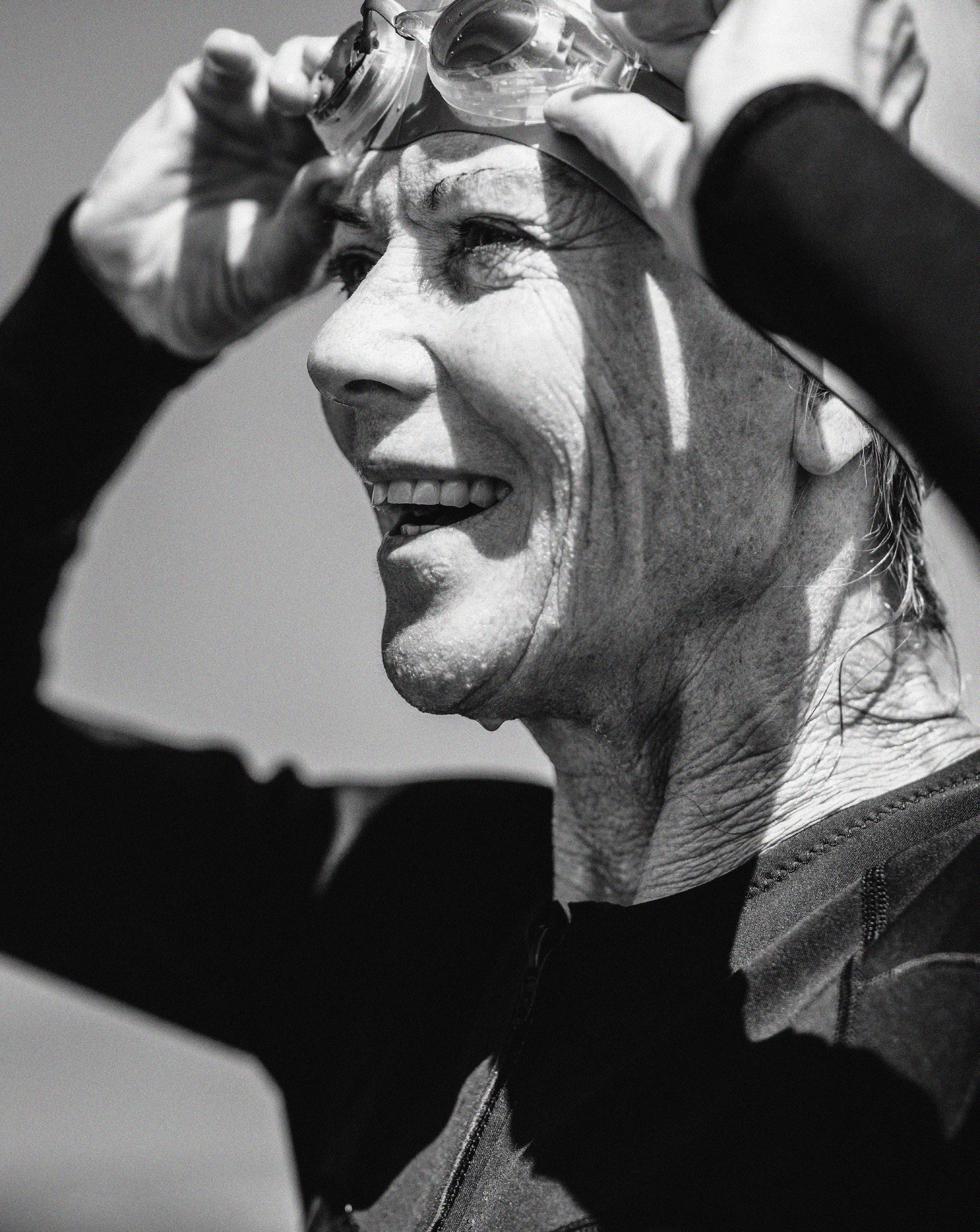
So why might we do this to ourselves? Gordon McCrorie, a life coach with an interest in happiness, has some ideas.
“It starts with evolution,” he says. “Humans are not designed to be happy, because then we wouldn’t evolve. We’re designed to progress and push forward, and to do that there’s a dissatisfaction that often exists.”
Gordon explains how human beings get a hit of feel-good hormones when we achieve something, or move forward in some way, which reinforces our
desire to continue the pattern, and leads us to chase these smaller moments of pleasure, rather than the larger concept of ‘happiness’.
Returning to Clive Hamilton’s example in the workplace, this could look like working towards a promotion. You’ll earn more money and gain higher social status and, once you’ve got it, you might feel good for a while. This is what you’re ‘meant’ to do, this is progress. But, in time, that large paycheck doesn’t feel so large, and the short-lived peak in good feelings fizzle out.
So, it’s on to the next thing – you’ll finally be happy when… Precisely what that next goal will look like is less about biology and much more about something distinctly modern. “Marketing’s job is to highlight pain points to get us to take action to solve that particular problem, so we are bombarded by stories and images of those things,” Gordon explains. “Humans navigate the world in relation to ‘where am I in the hierarchy?’ If you think about today, and the group that we are in comparison to, it’s Hollywood stars and people who are

Happiness only really exists in the moment. It’s not something that we can predict in the future
genetically great in the gym. If we go back not that far, we would have had small tribes, and we could be the best at something. Whereas, now, we are comparing ourselves to people who are the best in the world – people who are in the 1% of the 1%.”
So, not only do we have this natural inclination to always be looking to the next thing, but our culture is pointing us in the direction of what we should be chasing. And this can creep into our lives in sneaky ways. Gordon highlights the example of going to the gym. Taking care of our body is a great thing to do, and can have a real impact on our happiness. But if, after a hard day at work, you force yourself to do a hard workout because you’re pursuing a particular body standard, you’re driven right back into the deferred happiness mindset (you’ll be happy when you can lift a certain amount, or run a certain distance, or look a certain way).
When it comes to a solution to all this, similarly to Clive Hamilton, Gordon acknowledges that there’s
a balance to be struck between finding that sense of happiness and still progressing in the ways that we need to in order to get by.
“We think that we will lose our drive if we become too ‘zen’,” Gordon reflects. “Technically, that is true. I’ve been there, and that’s not ideal either because you do have to make money. There’s a balance to be had between achieving, pursuing and working, and resting and being at peace. When we don’t acknowledge that balance, we harm ourselves because we’re in overdrive and we’ll burn out.”

But what does it even mean to ‘be happy’? “Happiness only really exists in the moment,” says Gordon. “It’s not something that we can predict in the future.
So, therefore, I think we start by thinking, when have I been happiest? Success needs clues.”
So, how might someone begin to find happiness now? Gordon has some suggestions:
• Do things that relate to your purpose. People who have a purpose will be happier.
• Learn to enjoy the process rather than the anticipation of the outcome.
• Learn to live in the moment.
• At the end of the day, look for two things you did well and praise yourself genuinely. Learning to look for the good will help you to be happier, and build a better relationship with yourself.
• Create your own ‘sanctuary time’ in your week where you remove distractions and focus on doing things you really enjoy to nourish you in some way, shape, or form. We will all have our own version of what this will involve.
So, think about what happiness looks like for you, not what it looks like for others, or the people you see on social media. There’s nothing wrong with having goals, they can be great things, and there is so much out there to achieve. But while you’re working away, know that happiness is still something that you can have, right now.
These days, who hasn’t called an Uber, stayed in an Airbnb, or tried out a co-working space at some point? But, as helpful a service as they might offer, have you ever paused to contemplate what the concept behind these businesses could teach us about the future of consumerism?
With the cost of living a constant shadow over our shoulders, along with a deeper awareness of our environmental impact and a desire for less waste, it’s perhaps unsurprising that people are more conscious of their spending, with a drive for owning less ‘stuff’ and a call for more minimalist living. With that in mind, collaborative consumption could offer an interesting alternative.
Various companies, such as those previously mentioned, along with other big names like Vinted and Poshmark, are utilising a community feel to facilitate the sharing of services for your convenience. From ridesharing, to re-selling, co-working and peer-to-peer lending, these businesses allow members of the public to profit from sharing what they have, while providing a service to others in need, without
the intimidating commitment of long-term costs.
A great example of this is companies opening up more flexible and remote working opportunities post-pandemic, saving money on long-term large office leases, and instead utilising hot-desking policies and co-working space memberships to give employees more freedom. Or with sites such as Borrow My Doggy connecting those with pets who need walking or company, with people who love animals and either can’t have their own, or don’t want a full-time commitment. Both examples demonstrate opportunities of sharing what we have as a community to the benefit of all involved.
But you may have also seen a rise in rental transport, with bikes and e-scooters for hire in cities, more options for renting occasionwear to avoid splashing out on something fancy you might only wear once such as with By Rotation or even Selfridges’ scheme, and apps like Too Good To Go and Olio helping to reduce food waste. The idea of sharing products, using only as needed, and focusing on community values is certainly seeping more and more into
every aspect of our modern lives, perhaps in ways you weren’t even conscious of.
Beyond specific organisations, what we can take away from this evolving sharing economy is the power we all have to do good and share with our neighbours. And you don’t have to use an app to take part. It’s about being conscious of your choices, lending a hand to those in need, and looking for ways to contribute to those around you in a positive way.
A few simple ways you can take this message offline and into the world might be:
No matter how much you loved a book, there’ll always be another tale calling your name from the unread pile on your bedside table. Why not share the stories that captured your curiosity, and hold a place in your heart, with your community? From repurposing red telephone boxes, to brightly coloured sheds, or a handmade box, quirky ‘little libraries’ are a lovely way to connect and spread inspirational words out wide. Get tips on how to start your own at littlefreelibrary.org and share a love of reading with your neighbours.
If the thought of more formally renting out your clothes seems a little daunting, you could establish a more open wardrobe policy with friends you trust! So, if you’re always complimenting each others’ latest fit, or share a similar style, you could make the most of this and help each other save some cash by lending each other outfits for events, holidays, or just for a wardrobe refresh.

Taking just one hour of your time, and with the NHS in England alone needing 5,000 donations a day, giving some of yours if you’re able to really can make a huge difference and genuinely save lives. Our own blood stores will naturally replenish in time, with red blood cells replaced within four to six weeks, which is why you’re required to wait at least eight weeks between donations, but it is something you can keep giving and supporting to help those with critical illnesses.
Particularly if you have any elderly or vulnerable neighbours, but equally useful for those who might be working long shifts or unsociable hours, or juggling a household of children, having someone check in and see if you need a few things picked up from the shop could be a huge relief. This could be on an ad hoc basis, or you may consider a rota for those willing to help out on the street, to share the load and align with existing shopping habits. So, if someone is running low on loo roll, they know which person is doing their weekly shop, and who they should drop a text to.
The sharing economy might be a business construct, but it’s still all of our businesses to make the lives of those in our communities a little easier where we can. Finding ways to share and support each other in times of need could pave the way for a happier, and healthier, society for the long-haul.
It’s about being conscious of your choices, lending a hand to those in need, and looking for ways to contribute to those around you in a positive way
Starting a new job can be stressful, and doing so when it’s a remote role can bring added challenges. Many more jobs are now either fully remote or hybrid, meaning a fair chunk of us are working from home at least part of the time.
Of course, remote working can bring lots of benefits – many love ditching the commute, and having the freedom to choose roles where we aren’t wedded to a geographical location. But the lack of water cooler chats and office community can be hard, especially when you’re new. Here, we look at what you can do to settle into a new role while working from home.
Not sitting beside your colleagues can feel like a barrier when starting a new job, but there are still ways to connect remotely.
“Attend any online training or other meetings that your team holds, even if they are optional,” says coach Anita Gohil-Thorp. “This will not only help you to
get to know others, but it will also help you build trust and your own reputation. Contribute, and let the team get to know you.”
You may well find you click with certain colleagues. Ask about meeting up, whether at a Zoom chat or in-person coffee where you can. Take up the offer of any social events or in-person sessions too to help make connections.
“Eye contact is still relevant,” says confidence coach Gemma Holmes. “I always encourage my clients to talk into their webcam as if the camera is the eyes of their audience. This will appear to your colleagues as if you’re talking straight to them and can help with building a connection and instilling a sense of confidence.” That said, it’s best not to stare down the lens constantly, as this can feel uncomfortable or unnatural.
To boost your confidence outside of meetings, Anita suggests using affirmations such as “I am competent in my new role,” “I
excel at this task,” and “I choose to move outside my comfort zone for career growth.”
One of the challenges of starting a new job is learning exactly what your day-to-day will look like.
“To be clear about your role and responsibilities, talk to your line manager regularly so they are aware of your capacity and whether you’re fulfilling tasks that support the development you want in relation to the job you applied for,” says Anita. Asking what your priorities should be can help you both get on the same page. Look back through the job description for your role to understand what’s expected of you. Anita emphasises the importance of boundaries to ensure you don’t work longer hours or beyond your job description too often.
Working remotely can mean it takes a little longer to understand your workplace and how people
From dealing with virtual meetings to setting boundaries, here’s how you can make a new remote job work for you
like to communicate. See if your organisation provides things like diagrams that show the team’s structure.
“You can initiate, and maintain, conversations with current team members and your line manager,” suggests Anita. “Express that you are keen to integrate seamlessly, and that understanding how they like to work will help not just you but them, too. For example, you will be less likely to interrupt them if they keep 12–2pm as a time to go through emails, or if they are working in a time zone that means they are six hours ahead of yours.”

“If you feel able to, keep your camera on during meetings,” advises Gemma. “If you turn your camera off, even if it’s a meeting you’re not required to do much talking in, it can come across as disinterested,” she says. “Keep your camera on and remain focused on the content. You’re far more likely to pick up on
opportunities to engage with the conversation and add value.”
She also suggests being mindful of your posture – not just for the sake of your spine. Having an open posture can increase your sense of confidence, and shows you’re interested and engaged.
Looking after yourself is essential in any role. “If you are feeling the workload is too much, consider practising how you will talk about this with your line manager,” advises Anita. “If you are feeling demotivated, reflect on what it is that is missing for you in the role.”
If you have a mental health condition or other health concern,
consider letting your line manager know, so that reasonable adjustments can be put in place, or so you can access things like counselling through occupational health.
Introducing simple techniques like going for a lunchtime walk, listening to music, and making time to meet with friends after work can all help, too. And if you’re in a better mindset overall, you’ll be in the best position to settle into your new venture.


“It’s the possibility of having a dream come true that makes life interesting PAULO COELHO, THE ALCHEMIST
Exploring the phenomenon that spells dating disaster, and what relationship ‘icks’ are really all about
Istarted dating last year after my marriage ended and, let me tell you, there was a lot to learn. From which photos to use on my dating profile, to figuring out who pays the bill on the first date, I was bamboozled by this new world.
But one concept I didn’t have to learn about was ‘the ick’, because even though I’d never heard the term itself, I soon experienced it on a date, and learned that it’s a gut feeling you cannot ignore.
My experience was with a gorgeous brunette who had a great job, interesting chat, and cool taste in music. Our first date was in a bar where we had a drink to see if we vibed. Sparks were flying, but about an hour into our conversation, I started to notice something. She looked
Writing | Fiona Fletcher Reidfamiliar. As she took a sip of her gin and licked her lips I realised: she looked exactly like my exhusband’s sister.
In that instant, any romantic feelings I had towards this beautiful woman vanished, because there was just no way I could be attracted to someone who looks like a person who I, until very recently, considered family.
I spoke to Dr Sara Tookey, clinical psychologist and founder of True North Psychology, who explained that the ick is “a term commonly used to describe a sudden feeling of discomfort or repulsion that can arise in the early stages of a romantic relationship. It might manifest
as finding small habits or behaviours unattractive, or feeling a general aversion towards the person.”
It could be something about their appearance, such as choosing to wear a tracksuit to dinner or having really long nails. On the other hand, it could be something that you feel crosses a boundary, such as being too touchy-feely, or asking extremely personal questions too early on. Whatever the ick, it’s something that tends to turn you off and make you cringe.
“If you notice a significant shift in your feelings towards someone, where you feel repelled or consistently bothered by their presence or actions,” says Dr Tookey, “it could be a sign that you’ve caught the ick.” >>>
The interesting thing about icks is that they can be an opportunity to learn a lot about yourself. Jacques Lacan’s mirror theory says that the things we dislike in a partner are things that need attention within ourselves.
For example, if you get the ick because your love interest speaks too loudly in public, it may highlight that you despise that same trait in yourself, even
if you’re not conscious of it. The inverse can also be true: you may have a deep-rooted fear of being the centre of attention, and this ick is an invitation to address your tendency to be quiet, instead of expressing yourself authentically.
When we dig deeper, the icks you have can tell you a lot about your capacity to even be in a relationship. According to Dr Tookey, “The ick can sometimes

be a sign of unresolved personal issues, unmet needs, or fears about intimacy and vulnerability.”
It’s common for icks to appear when the shine of a new romance wears off. Something that may have seemed like a cute quirk in the beginning becomes an irritation, and the more irritable you become, the more icks appear, and so the spiral continues. But you don’t have to write someone off immediately because of an ick. It’s worth being patient and seeing how things play out, because you may have found something ick-worthy for entirely separate reasons, such as work stress, lack of sleep, or perhaps you were just having a bad day. When the ick is small and seemingly insignificant, it can be tempting to brush it under the rug. But bringing it to light either in your journal, with friends, a therapist, or with your partner can be enough to dismantle the ick, and move forward positively.
It’s normal to get the ick now and again, after all, you’re only human and can’t possibly click with every person you date. However, if you notice a pattern of getting the ick
with every connection, it may be a sign that you’ve formed the habit as a way to distance yourself from getting into a committed relationship.
Look back on your dating history. Do you have a list of very specific flaws about every person you’ve been involved with? Did these icks appear as soon as you hit a relationship milestone, e.g. at the one-year mark, or when you became ‘official’?
The hard question to ask here is: what is this ick really about? And is it triggering something in me that needs attention?
It’s worth pondering, also, whether you have unconsciously chosen to set the bar so high for your potential partner that, realistically, no one could
ever make the grade. Using perfectionism as a defence mechanism is normal, and unpicking this can lead to selfgrowth and happy relationships.
Dr Tookey says self-reflection is key. “Examining your beliefs about intimacy, past relationships, and fears related to vulnerability can provide insights into whether the ick is acting as a barrier to deeper emotional connections. Engaging in therapy, particularly focusing on interpersonal relationships, can help explore these patterns and develop strategies to overcome them.”
There’s no doubt that getting the ick when you’re in the early stages
of dating is way easier to deal with than in a long-term relationship. After all, the whole point of dating is to get to know each other and find out if you’re compatible. But, if you’ve been in a committed partnership with someone for years, getting the ick can be unnerving. It doesn’t necessarily mean things are over, and how you approach the situation will be unique to your own experience and circumstances. “It’s crucial to differentiate between temporary phases of discontentment that can be addressed, and deeper, persistent issues,” says Dr Tookey. “Open and honest communication is essential in discussing your feelings and concerns. Exploring the source of the discomfort, seeking couples therapy, or individual therapy, can help to identify and work through underlying issues.”
So, instead of ending your relationship straight off the bat, use icks as an opportunity to nurture yourself first. Then make an informed choice about how to move forward, with or without your partner.
The ick can sometimes be a sign of unresolved personal issues, unmet needs, or fears about intimacy and vulnerability
Rather than mindless scrolling, why not treat yourself to some mindful learning instead?
Writing | Rebecca ThairWhile it’s all too easy to get caught up in cycles of procrastinating, reaching for your phone to scroll social media whenever you have a spare moment just to fill the time, there is another option that could still give you a break while also providing a bite-sized brain boost!

Micro-learning is all about broadening your skillset, with mini lessons at your leisure. While this might not be best for complex subjects, it’s a means of filling up your cup of knowledge a little bit at a time, without it becoming overwhelming or time-consuming. It’s actually believed that this approach of short bursts of learning could even improve your retention, as you can focus on the key pieces of information, rather than trying to recall huge volumes of facts, or decipher the essentials from an encyclopedia on the subject. Intrigued? Here’s a mini guide on how to get started:
1. Pick a topic or subject that you want to learn. This could be anything from a new language, to practical activities like
how to draw, or knitting, or simply a subject you’d like to discover more about – such as astronomy, mythology, or a sport.
2. Define your goal. Create some motivation by focusing on what you want to achieve, complete, or gain by fulfilling this learning. Knowing what you’re working towards can help keep you on track when it’s tempting to fall back into old habits.
3. Decide your method of learning.
Consider how you best retain information, or what would be most engaging for you. If you want to learn on the go, you might want a podcast you can dip in and out of at convenient times. Like rewards or tracking progress? Perhaps there’s an app for you, such as Duolingo for learning languages. Visual learner? Search for YouTube videos on your subject matter, or a TikTok series. Or, if you want to get away from screens, you could carry a book with you for opportune moments.
4. Create the habit. You might want to schedule in time each day to devote to this specifically, popping it in your calendar with a reminder notification – particularly helpful for practical activities. Or, perhaps it’s about habit-stacking and deciding to pair your learning with going for a walk, doing the washing up, or cooking dinner. Alternatively, it could be consciously swapping scrolling time for learning, implementing time restrictions on certain apps, or when you get the impulse to pick up your phone, using that as a prompt to learn.
5. Reflect on your progress. What works best for you? This could be a tracker to see your commitment, regular check-ins, progress pictures or recordings, or self-reflection upon reaching your goal! When you take note of the progress you’re making, you might just surprise and inspire yourself further.
18 months down the line from making the decision to go sober, mental health advocate and podcaster Luke Clark shares the highs and lows, along with his words of wisdom for anyone else who is sober curious
Writing | Luke ClarkIcan pinpoint the exact moment when I swigged my last alcoholic beverage. And I think most sober people do, as we find solace in counting the number of days, weeks, months, and years since we made that massive choice. Because every day is a huge achievement. My turning point came around Christmas in 2020. Still mentally recovering from a traumatic experience the previous year, I found myself drowning my emotions in shots, pints, and cocktails during a night out with friends. I wanted to escape the pain I was feeling. A few drinks too many, and the night spiralled out of control. I ended up passed out in a doorway, causing my wife to worry and search for me in a state of distress. This wasn’t the first time something like this had happened, but it had to be the last.
On reflection, it became clear that my poor mental health and alcohol – on top of the anti-depressants I was taking at the time – were not a good mix. Deciding to go sober was a decision that had been brewing within me for quite some time. I had attempted to give up drinking before, after blacking out, but it never stuck. The appeal of pints at the pub, sharing a bottle of wine with takeout, or necking the unlimited booze on all-inclusive holidays made it seem almost impossible to give up. In the past, I was doing it for others, not for myself, and I imagine that’s why it failed.
But, the morning after my last booze fest made me realise that I really needed to prioritise my mental health and wellbeing. Alcohol was not helping, and it was time to make a genuine change – for me.
The initial thought of going sober terrified me, especially in a society where drinking is deeply ingrained in every social interaction. “Fancy going for a pint?” was a regular phrase from mates on WhatsApp. And at that point, I knew just one other person who didn’t drink. Overcoming this fear was one of the most significant early struggles, particularly for someone like me who also battles social anxiety. I won’t sugarcoat it – it was tough, and incredibly awkward. But embracing sobriety is a journey you must own. You’re making that choice for a reason, so hold onto those reasons, and remember why you made that decision in the first place. Picturing myself slumped in a doorway, vulnerable and motionless while my wife tried lifting my dead weight into the passenger seat of our Nissan >>>
Juke always springs to mind. I don’t want to put myself or her through that ever again. I don’t want to put myself in that much danger ever again.
A few months down the line from committing to sober living, I began to realise that I didn’t need alcohol to have fun or connect with others. Surprisingly, I found that I could be more present and engaged in conversations when I wasn’t under the influence. And for the first time in my life, I was fully in control of my thoughts and actions. It felt really good.
As I grew more comfortable in my new skin, I ventured into exploring new hobbies and activities that brought genuine joy and fulfilment into my life. I tried indoor bouldering, wild swimming has become a part of my weekly routine, and I even went to my first solo music gig sober. Pre-sober Luke would have never even dreamed of doing those things.
After a while (and this really surprised me) I found a whole load of other people that had made that same decision. And by finding those people, you can build a support network around yourself. I sought out and connected with others who were also on the path to sobriety through support groups and online communities. Discovering that I wasn’t alone in my struggles was a gamechanger. And being able to share experiences, offering and receiving support, and knowing that others understood what I was going through made a world of difference.
But my first real challenge was yet to come: my brother-in-law’s wedding. My first sober wedding. Surrounded by intoxicated people, I couldn’t help but feel uneasy. It seemed like everyone was raising their glasses, having a great time, and I really felt like I was missing out. But I stuck

to the coping mechanisms I learned in counselling (such as 4-7-8 breathing, and the 5-4-3-21 grounding exercise using my senses), and leaned on those around me who I knew would make me feel at ease. In times like these, it’s good to surround yourself with people who understand and support what you’re doing.
The next morning, as I woke up without a hangover, I felt like a winner. Knowing that I had got through my first ever wedding sober filled me with pride. Oh, and talking to drunk people can be quite entertaining. That night I discovered a whole trove of family secrets and rumours!
Today, I’m 18 months sober. And I can honestly say that it’s

The next morning, as I woke up without a hangover, I felt like a winner
one of the best decisions I’ve ever made. My mental health has seen a massive turnaround, and I feel so much more in control of my emotions and actions. I feel so proud.
But as a society, we still have a lot of learning to do and discussions to have to dismantle the stigmas that surround choosing to go alcohol-free. You don’t need to do shot after shot of tequila with your friends to have a good time. And it doesn’t make you more fun being the one draining that pint at a party with people around you chanting “Down it, down it”. Going sober doesn’t make you boring. But it does save you a ton of money, stops you from those awful hangovers, and
allows you to remember what happened the night before.
If you’ve tried giving up alcohol before, couldn’t, or experienced a relapse, don’t be too hard on yourself. It’s not an easy path, but do keep trying because the positives far outweigh the negatives.
Choosing a sober lifestyle has transformed my life. It’s been a journey of self-discovery, allowing me to confront my struggles head-on, and develop healthier ways of coping with the anxiety and depression I’ve suffered with for more than 15 years. My mental health has never been better.

If you’re reading this and are sober curious, or are at the beginning of your journey, why not give it a go? There will be
many challenges along the way, but you’ve got absolutely nothing to lose – and so much to gain.
Luke Clark is an award-winning mental health podcaster and the host of ‘The Stress Sessions’. Follow him on Instagram @stresssessions

It’s not an easy path, but the positives far outweigh the negatives
With that autumnal feel in the air and the nights drawing in, there’s a natural inclination to seek out foods that are more ‘comforting’. This is instinctive; just like the seasons, our bodies follow a cyclical pattern too. While we thrive on lighter foods during the warmth of the summer months, we have different nutritional needs as the weather cools down.
It’s important to honour these natural cycles. There’s a good reason you don’t feel like eating a cold salad on a wet, windy October day! The key is to treat your body with nutrient-rich foods that feel satisfying, as well as provide the nourishment your cells are craving. This naturally curbs the temptation for the false treats that, while fun at the time, can leave you feeling worse afterwards.
This tasty flapjack recipe hits the spot on both counts. It’s so delicious and comforting, you
wouldn’t know it’s free from gluten, dairy, and refined sugar, plus it’s super easy to make for a crowd. The ideal Halloween treat – in the truest sense!
Serves 12
• 60g hazelnuts
• 60g almonds
• 150g rolled gluten-free oats
• 50g dried unsweetened cranberries/mulberries/raisins
• 2 tsp baking powder
• 1 tsp ground ginger
• 1 tsp cinnamon
• 2cm fresh ginger
• 5 dates
• 75g coconut oil
• 3 tbsp maple syrup
• Preheat the oven to 160oC.
• Chop the hazelnuts and almonds, and place into a large
bowl with the oats, dried fruit, baking powder, ground ginger, and cinnamon.
• Remove the skin from the fresh ginger and grate. Add to the large bowl. Mix until well combined.
• Remove the stone from the dates and chop roughly. Add them to the bowl.
• In a small pan, gently heat the coconut oil before adding the maple syrup. Mix well and remove from the heat. Combine with the dry ingredients.
• Line a 20x20cm baking tin with baking paper. Spoon in the mixture, pressing it into the edges.
• Bake for approximately 25–30 mins until golden brown around the edges.
• Leave to cool. Remove from the tin and cut into 12 equal squares. Serve immediately, or pack away ahead of time. They keep in the fridge for a few days.
Ginger and cinnamon are spices that encourage contentment and ignite your inner glow. Ginger ‘fires up’ your metabolism, and helps soothe digestive issues, such as indigestion, bloating, and nausea.

Cinnamon is nature’s blood-sugar balancer. While naturally sweet tasting, it actually improves insulin sensitivity and prevents blood sugar spikes – one of the leading causes of hormone imbalance. The hazelnuts and almonds are tasty sources of plant-based protein that help to offset the naturally occurring sugars, and keep energy levels stable. They are rich in vitamin E (great for nourishing parched skin), and contain magnesium, a calming mineral. Similarly, coconut oil has been shown to support mental wellbeing and enhance mood. It also supports healthy immune function, reduces inflammation, improves memory, and encourages healthy hormone balance. Due to its high smoke point, it’s a good option for baking. Finally, oats contain beta-glucans, a soluble fibre that strengthens immunity and supports healthy digestion. They provide a steady, slow-release source of fuel for your body to help avoid the blood sugar crash that’s all too common after traditional sugary snacks, making these flapjacks all treat and no tricks for your health this season!
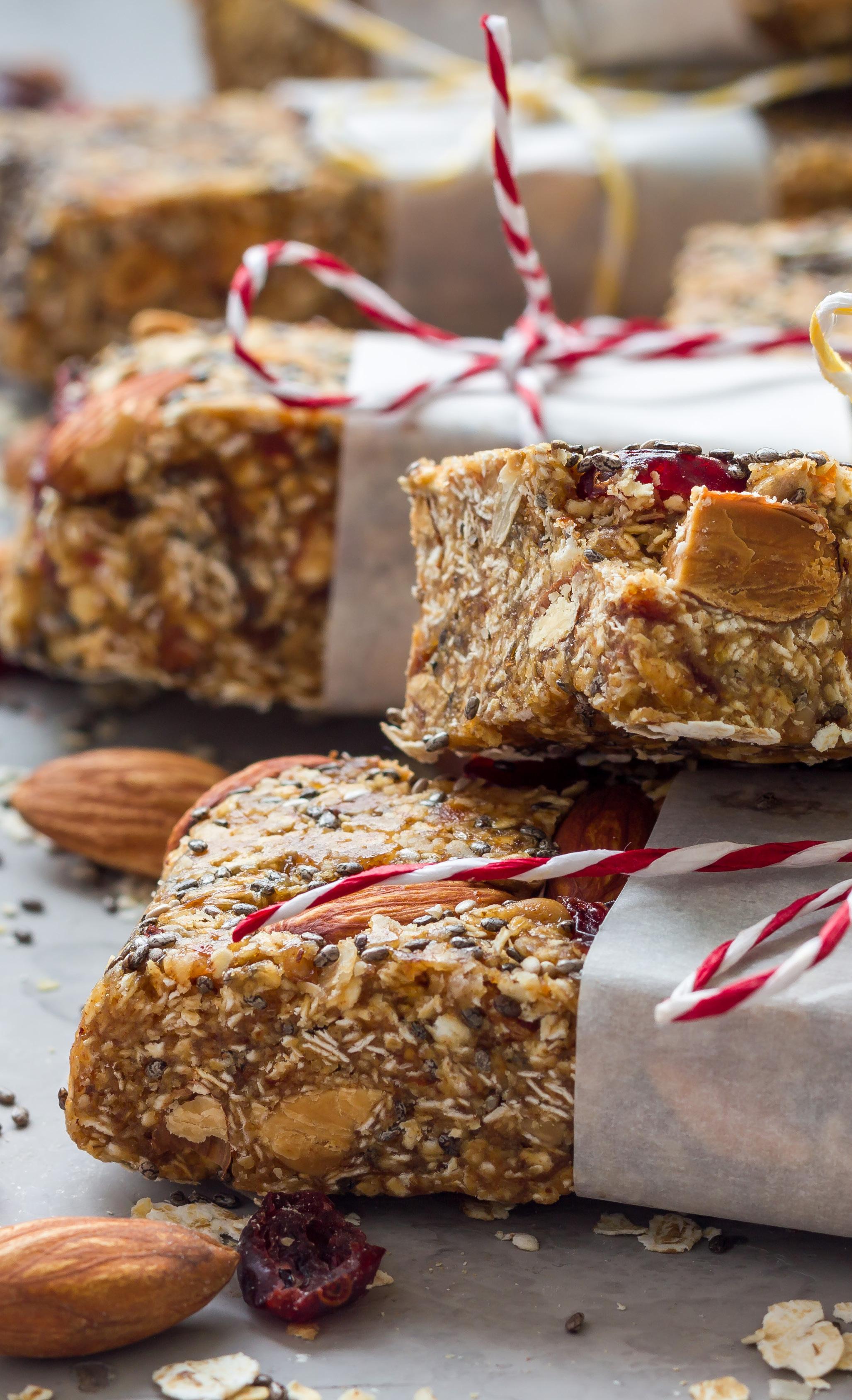
Long waiting times and competition for appointments can amp up the stress before you reach the surgery. Here, we’re exploring tips for staying calm, and getting the most out of your appointment
Writing | Rosie CappuccinoGetting a GP appointment can be a challenge in itself at the moment due to demand, so it’s becoming more essential than ever to make the most of it, and ensure that you leave the consultation with your needs met. Given that appointments may already be anxiety-provoking due to their possibly sensitive nature, this desire to maximise every moment can add another layer of pressure. With this in mind, here are five tips that can help you get the most out of a consultation, while taking care of your wellbeing at the same time.
Make a list of what’s troubling you ahead of time. Not only will this be a helpful aide-memoire if you become overwhelmed during the appointment, but the act of writing may clarify what you want to share with the doctor. If your symptoms have been present for a while, make a log of what you experience, when, and for how long, as well as any
triggers or emerging patterns that you notice.
It’s only natural to want to know more about your situation in the run-up to your appointment, but take care to use reputable and compassionate sources. If you have to wait a long time to get an appointment, try gentle distractions or self-soothing to calm any health anxiety that arises. As counsellor Georgina Sturmer advises, “If you’re catastrophising about the outcome of your visit, try to notice when this happens, and see if you can ‘catch the catastrophe’.”
It’s understandable to be anxious about GP appointments for a whole host of reasons. Perhaps you haven’t been able to book in with your usual doctor, have had a long wait for an appointment, or need to discuss something personal that you’ve never talked about before.
Georgina explains that our anxiety is often tied up in old
fears and memories that are triggered, and advises focusing on staying present. Validate yourself using statements such as: ‘It’s understandable to be anxious about seeing someone new.’ And, ‘My health is important, so it’s valid to feel concerned about getting my needs met.’
Sitting in a waiting room or being poised by the phone can be especially unsettling, so it may be useful to use relaxation techniques. Some options include solving puzzles, breathing exercises such as ‘five finger breathing’, or a mindfulness practice (such as noticing all the colours in the room). It’s helpful to practise ahead of time so you are comfortable doing these techniques on the day.
Stay mindful that a doctor is not there to be judgmental, but to guide you towards better health in an impartial manner. If you’re
feeling embarrassed, try to speak openly by remembering that doctors are highly trained, and will have seen patients with similar difficulties before. Georgina recommends telling the doctor if you’re feeling anxious so they can help you to feel more comfortable.
With the ever-growing awareness of how busy doctors are, it can be easy to feel like you have to rush through the consultation. Not only does this make appointments feel unduly stressful, but it can lead to skipping over important aspects of your experience, or not fully absorbing what the doctor is telling you. This may be especially true during remote consultations, where body language is not present or less visible.
Regardless of the time, it’s essential to remember that your needs matter. GPs require a full picture of your situation, and they want to make sure each patient leaves with their concerns addressed and questions answered. If you feel under pressure, become flustered or forgetful, use phrases like ‘Can I have a moment please?’ Or, ‘I just need a second to check my notes.’
Remember, you deserve to take up space! If you are feeling undeserving then Georgina suggests asking yourself, ‘What would you tell a friend if they were feeling anxious about seeing a doctor because they didn’t feel worthy?’
MAKE A LOG OF WHAT YOU EXPERIENCE, WHEN, AND FOR HOW LONG, AS WELL AS ANY TRIGGERS OR EMERGING PATTERNS THAT YOU NOTICE
Make notes during the consultation so that you can review key information later. If the GP is making a referral, find out when and how you will be contacted, and set a reminder to follow up if needed. Similarly, if you have been prescribed
medication or given a treatment plan, ask how long it will be before you feel the impact, and what to do if it isn’t working. Don’t be afraid to go back and ask for more help if you are still struggling. Above all, remember that your health is the most important thing you have, and it deserves to be looked after.

From a sustainable travel handbook to a memoir about embracing differences, here are four books to add to your reading list this month
 Writing | Lauren Bromley-Bird
Writing | Lauren Bromley-Bird
On the days that we are struggling, sometimes all we need is a friend to help us to feel more like ourselves again. And what better friend is there to help us through these challenging times than mental health advocate Matilda Heindow?
In her book The Art of Feeling Better, the talented illustrator uses tools from her own mental health
An Immense World: How Animal Senses Reveal the Hidden Realms Around Us
 by Ed Yong
by Ed Yong
Fascinated by animals and how they interact with the world around them? Within the pages of this extraordinary book, you will unlock the mysteries of how the animal kingdom truly experiences our planet through a tapestry of sights, sounds, textures, smells, and tastes.
The Art of Feeling Better: How I Heal My Mental Health (And You Can Too) by Matilda Heindow experiences to help you become the friend that you deserve in times of need. Afterall, no one knows your mind better than you. With more than 50 informative illustrations and pages packed

with practical advice, Matilda’s hope is that this toolkit will leave you feeling inspired, empowered, and validated.
Go Lightly: How to Travel Without Hurting the Planet
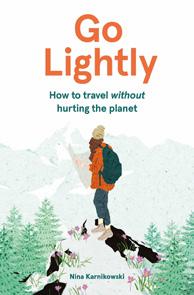 by Nina Karnikowski
by Nina Karnikowski
The world is such a magnificent place to explore, but how can we discover it without causing harm? This travel handbook is your gateway to conscious exploration, revealing the greatest of tools to help you discover the globe while treading lightly, from choosing the less impactful methods of travel to eco-friendly activities.
Not All Heroes
Wear Capes by Jono Lancaster
Jono was born with Treacher Collins Syndrome – a rare, genetic condition that affects how the face develops. In his moving memoir, Jono reveals how he found self-worth and self-love in his differences, and draws on his personal experiences to help you embrace your own and find the hero within.

We hate to burst the luxurious bubble, but creating your own bath bombs is a lot more simple than it sounds. Ready for some fun crafting? It’s time to soak it in
Picture this: the gentle lapping of water filling the tub, steam rising and dancing in the light of candles flickering. You take a bath bomb, and feel the powder crumble slightly in your fingers, before the fizzing erupts and bubbles are unleashed as it descends beneath the surface. The soothing aromas combine and create a heavenly scent, as you slip into the warmth of the water, and feel your muscles immediately relax.
It’s a divine daydream, but the art of bathing goes further than providing an opportunity for some tranquil self-care, as it’s been scientifically proven
to support our wellbeing too. For example, a study from the University of Freiburg, in Germany, found that a 30-minute soak in a 40oC bath provided a mood boost for participants with depression. Researchers went even further to conclude that regular baths could be more effective at addressing depression than aerobic exercise.
Plus, for those who struggle with sleep, the warm water could help set your body temperature up for a good night’s rest, soothing muscles and helping to release some stress before you turn in as well.
One way to level up your bath game is by enchanting your
various senses through adding a bath bomb! And making your own at home provides a mindful and fun crafting activity during the day, with the added reward of getting to enjoy the results with an indulgent soak at night. Tempted to give it a whirl?

Want to show someone you truly care? The thought and effort put into homemade gifts is unparalleled, so perhaps you could create a special bath bomb or bundle for someone you love.
You will need:
• 100g bicarbonate of soda
• 25g cornflour
• 50g citric acid
• 2 tbsp of oil (sunflower, olive, or coconut)
• 1/4 tsp essential oil
• Liquid food colouring
Optional:
• Eco-friendly cosmetic glitter
• Dried flowers (e.g. rose petals, lavender, or camomile)
Tools
• Mixing bowl
• Additional bowl
• Whisk
• Spray bottle (optional)
• Moulds (can buy online, or use muffin baking trays, or round ice cube moulds)
1. Mix the dry ingredients and citric acid together in a bowl, and whisk until combined.
2. Add your oils and food colouring of choice into a separate bowl, and mix together. Liquid food colouring will work better, as gel could get clumpy!
3. Gradually add your coloured oil mix into the main mixing bowl, whisking well. If you want an extra bit of pizzazz, include your cosmetic glitter here so it’s mixed through.
4. Once all the ingredients are added, you’ll want to add a few drops of water to help turn
your mixture into almost a dough so it holds its shape. You can just add water drops directly, or you may find a spray bottle helpful as you work it into a ball. Use your hands to create the desired round bath bomb shape, ensuring you don’t get it too wet in the process.
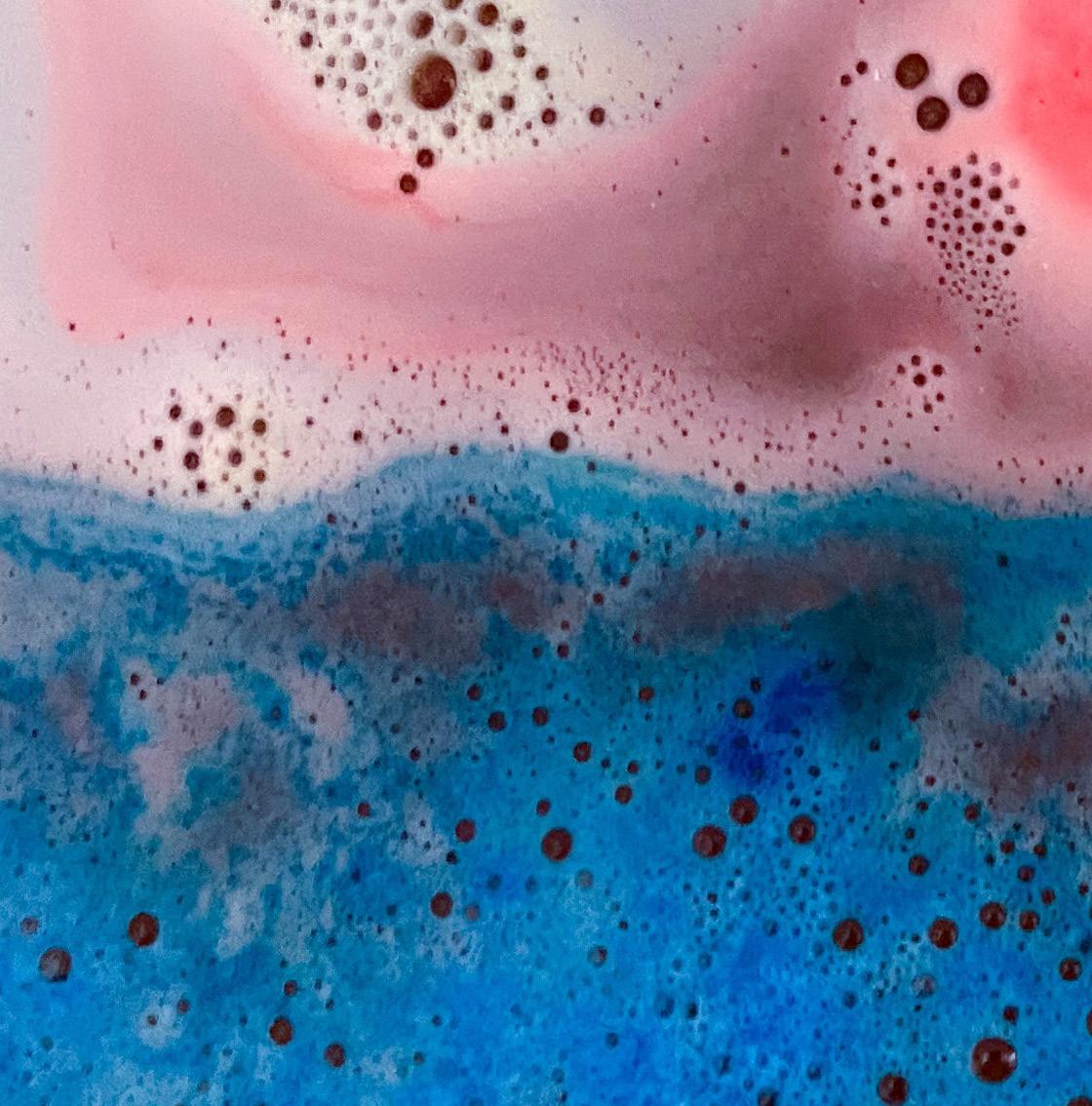
5. If you want to add any petals, now is the time to include them. Pop them into the bottom of your mould (could be a makeshift one mentioned previously) and add your mixture on top, patting it down so it’s firm. With muffin cases, most will create half spheres that you can combine when set, so be sure to smooth the flat surface as much as possible so they’re easier to connect if that’s your plan.
If you don’t have a mould option, you could just leave your hand-shaped ones on a baking tray, lined with parchment paper, and press decorative elements on the top. Your shape might not be quite a perfect sphere, but its uniqueness will still be beautiful.
6. Allow your bath bombs to dry out for up to 4 hours in a cool, dry space, before carefully removing them from the moulds. Then, enjoy a luxurious soak at your leisure!
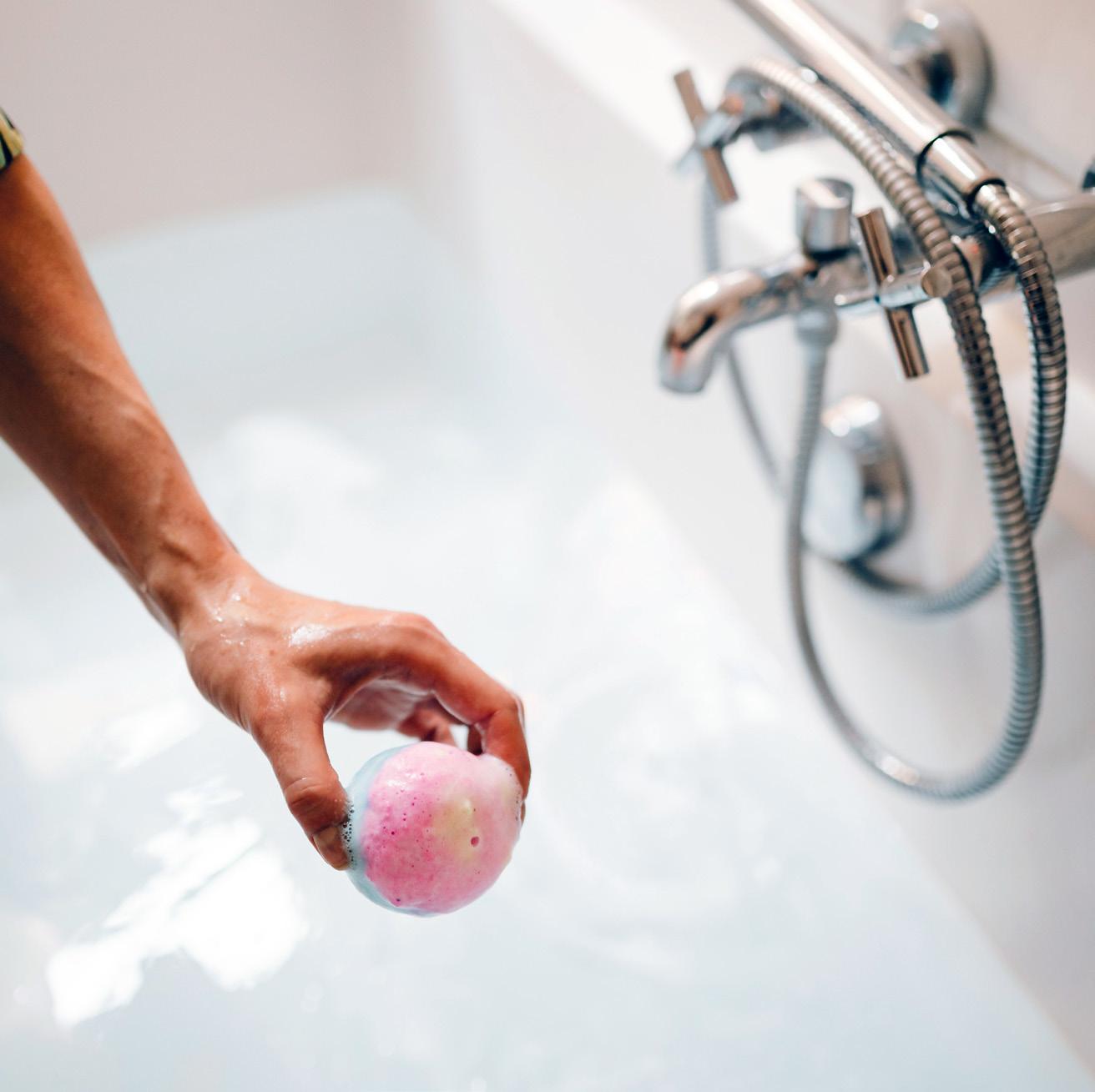
Counsellor Nina Jellinek answers your questions on family dynamics

Learn more on the Counselling Directory.
QCan you tell us what family dynamics are and why they are important?
AFamily dynamics refer to the ways in which family systems operate. It includes thinking about how family members relate both to each other individually, and to the
QI find it hard to form relationships. Could my family dynamics be affecting this?
AFamily dynamics do tend to have a lot of influence on how we form later relationships. They give us our first examples of what relationships are like,
‘family’ as a whole. It also refers to the role each person plays in the family system. Individual relationships and roles can change over time, but the family system itself can show a tendency to resist change. Our own family dynamics are our first introduction to how relationships work and how we are ‘supposed’ to feel or behave.
So they exert a lot of influence over our experience of the world, including how other people are, and what they expect from us. Our family dynamics also may create beliefs about what we need to do to be seen as worthwhile. As we get older, we may repeat learned patterns from family behaviour, or we may try to distance ourselves from them.
as well as instil many beliefs around our capacity to be loved and to love others. This then impacts how we connect to other people, consciously or not. We might gravitate towards certain people because their style of interacting feels familiar, so we may repeat negative patterns of interaction because they feel ‘normal’ to us.
If relationships in our families were difficult, we might fear repeating this in future relationships, and be wary of being hurt or rejected. Even if the family dynamic was not negative as such, if our style of thinking or behaving was different from others in the family, we may not feel certain we can connect with others or be understood.
QHow do I recognise that I’m caught up in a toxic family dynamic?
ASometimes it can feel clear that a family dynamic is toxic, such as when people are acting abusively, but often it is more subtle. There may be family beliefs that have a negative impact, such as a rigid expectation of a person’s role which does not actually recognise their needs, or where there is pressure to accept family values over one’s own.
Situations may become harmful even when people have good intentions, e.g. where people have changed, family patterns persist which can be unhelpful. For instance, parents may find it difficult to accept changes in their relationships with their children, as they grow and become more independent. What was initially nurturing could become limiting if roles are expected to remain the same. When a family relationship repeatedly makes you feel stressed, it is worth considering what family dynamics might be operating.
It’s important to consider whether there is actually anything you can do to change a difficult family relationship. Family systems can be resistant to change, and you may not be able to get others to act differently. If family won’t change, you are left with a decision as to whether staying involved is good for your wellbeing. You do not owe it to family, or to anyone, to continue to interact in a relationship that is harmful to you. If you don’t feel you need to step away completely, you might need to be clear about your boundaries. Whatever your decision, it’s important to recognise how the family dynamics are affecting your life, so you can make it less likely that this will be repeated in other relationships.


“In three words I can sum up everything I’ve learned about life: it goes on
ROBERT FROST
Falling in sync with natural rhythms, finding respite in the autumn air, and sharing the fruits of the season could reap many wellbeing rewards
 Writing | Caroline Butterwick
Writing | Caroline Butterwick
The sweet smell of woodsmoke drifts through the cool air as I walk the pale gravel path this early autumn day. I’m taking it slowly, studying the overflowing bushes to each side of me, hunting for blackberries.
“There’s more over here!” my husband calls, pointing. I join him, and together we gently pull large, ripe blackberries from the bush, careful not to catch ourselves on thorns.
We spend half an hour doing this, our fingers stained purple. We fill tubs with the fruit, ready to freeze and then bake into crumbles, or to enjoy sprinkled over porridge on a cold winter’s morning. We don’t take all that we find – we leave enough for hungry birds readying themselves for the cooler months, or for others out blackberrying. >>>
For me, early autumn conjures up vivid memories of foraging for this fruit. Growing up, my family would take to the fields on a sunny day like this, clutching carrier bags to fill with our finds. And while it’s a nostalgic tradition, it’s also a mindful one, as when I’m picking blackberries I’m very much in the present, searching for the juiciest fruits, and carefully tugging them off the bush.
You’re probably familiar with the idea of autumn as a time when we celebrate food. It’s a traditional time of harvest. I have a fond childhood memory of how, near the start of the school year, we would gather food for a harvest celebration, gifting tins to a local charity as a reminder of both the abundance of food at this time of year, along with how many unfairly struggle to get what they need – which feels even more pertinent in present times with the burden of inflation and the cost of living.
It’s that balance of light and dark, bounty and struggle, warmth and cold, that epitomises autumn. For years, I’ve been drawn to the pagan idea of the Wheel of the Year, which acknowledges the changing seasons through a cycle of eight sabbats, or festivals. The autumn equinox, this year celebrated on 23 September and known in the Wheel of the Year as ‘Mabon’, is seen by many as the start of autumn. It’s the day when hours of light and dark are equal, and afterwards, it tips in favour of darkness, with the hours of dark longer than those of light.
So, as the nights draw in, it feels like a time of reflection; a chance
to take stock of the year so far. What came to fruition over the summer? What do I want to take with me into the winter months? What can I celebrate and nurture further? What has supported my wellbeing, and what can I do to help myself through the winter? In what ways can I support others over these challenging months?
Much like the animals around us, we can use this time to prepare for the winter ahead, readying ourselves for hibernation. This could be decluttering or sprucing up your home to make it more inviting, or bringing nature inside by thinking of indoor plants you could nurture over the winter. Winter can be hard, so it’s worth thinking about how we can help ourselves, and others, in advance.
And, whether it’s pumpkin patches, hearty soups, or a harvest feast, this is a season heavily associated with food. So, to connect more with nature, you may want to ask yourself how we can nurture our bodies in a way that’s kinder to the planet. I try to eat local, or seasonal, food – and, thankfully, the harvest season brings lots of choice.
But for those struggling with the rising cost of a weekly shop, this might feel beyond their budget. So, if you’re able to, consider what you could do to help. With this period of reflection and taking stock, it’s a chance to pull together, and share what we can with our neighbours. That could be baking for a friend who is struggling, or donating to a
food bank. If you have a vegetable patch, and more supplies than you need, could you share them with your community and offer those in need a free, nutritious gift?
Last autumn, I passed a house with a bowl of apples on the front doorstep and a sign that read ‘Please take as many as you like’. The kindness of this act struck me, along with that of a friend with an allotment who regularly gives me excess crops. There’s something so satisfying about enjoying food in a way that seems gentle on the planet, connects us with nature, and has been cultivated with kindness.
Thinking of loved ones, I’m conscious that this time of year, after months of barbecues and al fresco drinks, it can be easy to let socialising slip. For me, spending time with friends and family is
With this period of reflection and taking stock, it’s a chance to pull together, and share what we can with our neighbours in needIf you’re struggling at this time of year, services like Citizens Advice can assist with getting support in place, and referring you on to places that can provide help. Visit citizensadvice.org.uk
crucial in supporting my mental health. And it’s likely to feel like a more lonely time for others, perhaps less able to get out and about in the changing weather, or share a warm greeting in passing while everyone is bundled up in scarves, hoods, or under the shelter of umbrellas.
But retreating indoors to the warmth, doesn’t have to mean retreating alone. How about inviting friends over for a homecooked meal? You could all bring something, and spend the evening enjoying good food and each other’s company.
Or you could make the most of autumnal activities; this year I’m going to a pick-your-own pumpkin patch. Since my teenage years, I’ve loved everything about Halloween, and I think a big part of that is how it captures the magic of autumn. So I’m going to have a day out with friends picking pumpkins (here’s hoping there’s a maize maze, too). As the days get colder, it’s all too easy to stay curled up inside, so finding reasons to get outdoors seems all the more important. Even making the effort to smile and greet passersby could be the warmth and connection another person needs as the frost approaches.
Whether you’re roasting pumpkin seeds, baking bread, or simply enjoying a warming cup of coffee as you wander through a woodland of crunchy russet leaves, autumn is the perfect time for us to connect with food and the turning of the year, and be inspired to share some kindness as a strong community spirit draws in through the air.

The pressure to reach certain milestones by various ages, and comparing your path to others, can be extremely damaging to your self-esteem. But, as Michelle Elman shares in her perspective on turning 30, your own definition of success is far more important, and can shift with the changing landscape of your life
Irecently turned 30 and, as with birthdays, there is often a reflective feeling where you evaluate how you are doing in life, potentially with some comparison to your peers. If you fail to hit the benchmarks you set for yourself, it can lead to a lot of worry, stress and, ultimately, not feeling very good about yourself.
I remember when I turned 24; it’s an odd age to have hooked milestones on to, but as a teenager, I always thought that at 24, I’d be married and have kids. I have had these goals since as early as I could remember, and therefore, understandably, I felt a little behind in where I should be.
But the truth is you can’t ‘fall behind in life’. Everyone has their own pace, and you can’t do life ‘wrong’. I could have focused on the lack of progress in my love life, or I could have looked at my life as a whole.
When I was younger, especially in primary school, I knew I wanted to be a mum one day, but what I
didn’t know was what I wanted to do for a job. Yes, I might be behind when it comes to my love life, but I was far ahead of my peers when it came to career, and therefore making myself feel bad for lacking in one area, doesn’t take into account the bigger picture.
Six years on, I am much more balanced in my life. My love life has caught up, but also my career has slowed down. When you put more time and energy into one area of your life, understandably, there is less time and energy for other areas, and that is why I did turning 30 differently. Instead of using it as a measure of what milestones I have hit, and which I have not, I used it as an opportunity to reflect on how much I have been able to do – a lot of which would have been unthinkable to the inner child me. I took time to be grateful for the people in my life, and most of all for the time I have been given. Growing up in hospital, I am acutely aware that not everyone
gets to make it to 30, and I feel immensely grateful given my bad luck in the health department to even be around and alive.
I’m excited to be in my 30s because I’ve realised that it’s OK for your definition of success to be different to everyone else’s. My definition of success changed when I was around 28 years old – a pandemic will do that to you. I didn’t want to be so busy any more, and my markers for success changed during a conversation with a woman I deeply admire and respect. She told me that one of her non-negotiables is that she picks her kids up at school every day at 3pm, and that no matter what, she is there. It spoke volumes to me about how she had her priorities in order, and that she was willing to give up jobs and opportunities in order to prioritise the people who matter.
Upon leaving that lunch, I reflected on whether I was doing the same, and I knew I hadn’t been. I was the kind of person
who would cancel dates for last minute work opportunities, and I would often get to the end of the week too tired and exhausted to see my friends, because I had spent all my social energy on mindless small talk at work events throughout the week. As soon as we came out of the pandemic, I made a promise to myself that I would reprioritise my life, and turning 30 has been confirmation that I have done just that.
In a world that regards power, money, and career accomplishments as markers of success, it’s important that you check in with yourself once in
a while and see whether these markers actually work for you, and whether they fit in with the life you are building. Look at where you are putting your time and energy, and ask yourself if it is fulfilling you. One of my own realisations is that if I didn’t make changes in my own life, my only memories of my 20s would be those of work, and that’s why I sought to gain more balance.
Give yourself permission to have your own timeline. Honour the timing of your life, and keep your eyes on your own road. It doesn’t matter what anyone else is doing. Someone else succeeding doesn’t take away from your life, and what
they covet might not be the same as your ambitions.
As we age, it’s also important to remember that you are allowed to change your mind. Getting older brings different perspectives, and if your priorities are different to what they once were, allow the version of you in your head to change, adapt, and be flexible.
Michelle Elman is an author, TEDx speaker, and five-board accredited life coach. Follow her on Instagram @michellelelman


It’s OK for your definition of success to be different to everyone else’s
Have you ever considered that the colours in our world might be able to help us balance and live our lives in the best way possible? For thousands of years, humanity has been using colour for diagnosis and treatment – through food and drink, clothing, and healing stones, to name a few. And the best part is it can be both easy, and free, by simply making the most of the beneficial properties of each of the colours when we need them.
Ask yourself: am I sleeping enough? Most of us try to get as much as possible done throughout the day, and, as a result, are awake for longer and longer hours. We do this even though we know that when we allow ourselves to get a good night’s rest we feel our best, and achieve our goals more easily. Blue is considered to be a colour that can help us relax and therefore improve sleep, with a study by the University of Surrey and Heinrich Heine University
Dusseldorf finding 30 minutes’ exposure to blue light can even lower our blood pressure –reportedly equivalent to or more than the effect of some blood pressure lowering medications.
I’ve seen the powerful effects blue can have with a patient of mine, a woman in her 50s who had sleeping problems and felt her life was “stuck”. We did her personal wheel of colours (my book shows you how) and discovered that blue, which is linked to intuition, spirituality, and the ability to relax and sleep peacefully, was her main colour. When she started using blue in a practical way – in her clothing and her house – she was able to listen to her inner voice, sleep better, and take action to change her life.
On the other hand, what can we do when we have trouble getting up in the morning, or when we feel tired and without energy? In such situations, we can use the colour red, which, in psychology, is associated with strong emotions – whether that be passion, strength, and confidence, or
impulsivity and anger. One study, published in the journal Emotions, found that red can increase the speed and strength of your reactions, as it is a colour we associate with needing to be alert (think of red traffic lights and warning signs). However, it should be noted that this boost in alertness may be short-lived, and could be accompanied by feelings of worry, so be cautious how you use it.
Is there a colour that benefits us all? Absolutely! Green found in nature can help us be more balanced, improve our health, and encourage our growth and renewal processes. A 2016 study in Environmental Health Perspectives actually found that women who live in or near green spaces had a longer life expectancy, and improved mental health!
This colour can be brought into our lives with the help of food such as green leaves, by placing green and healthy potted plants in our homes and workplaces, and by spending time in nature.
Bringing more orange into your life could work wonders, with a 2020 study in the Journal of Experimental Psychology: General finding it’s associated with enthusiasm, and considered bright and uplifting. Beyond mood, you could give your immune system a boost by eating oranges, which are high in vitamin C.
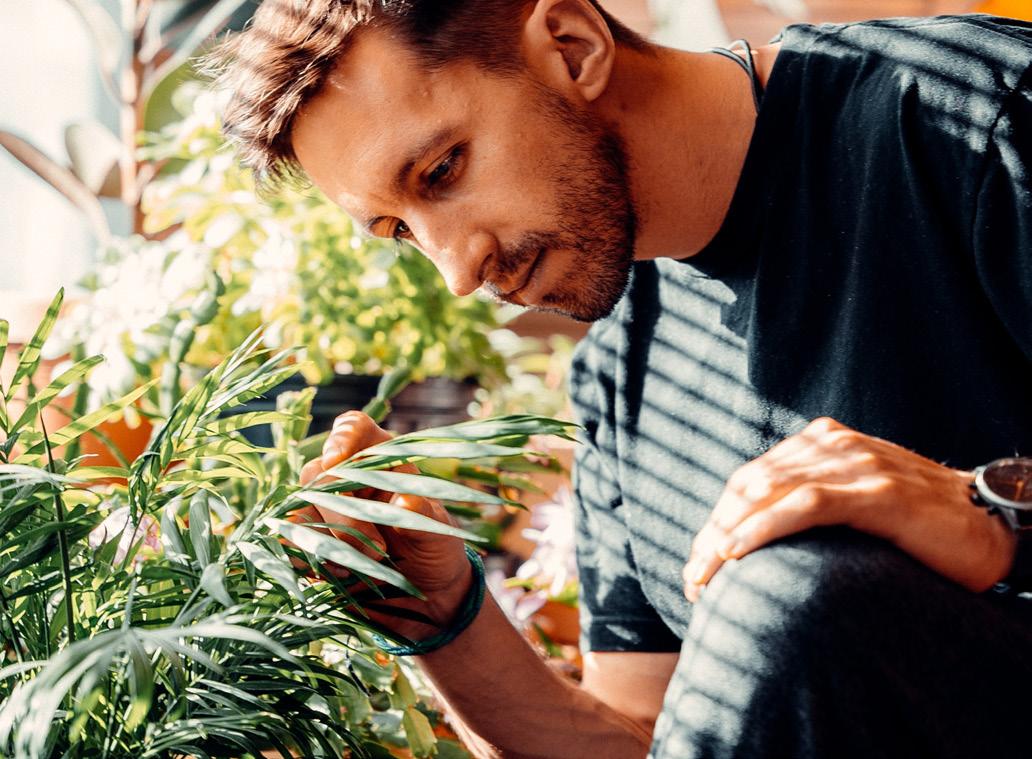
Of all the colours, pink has suffered the most from stigma and gender association. However, over the years, I have discovered that it works with every person in a wonderful way, and can help us relax and treat various emotional problems.
A man in his 30s who came to me for help was unable to find a relationship due to difficult events in his childhood, about which he refused to talk. When he saw a large pink rose quartz stone on my desk he was very attracted to it, and asked for my permission to keep it in his pocket for a week. On his next visit, he told me that during that week he had felt his heart open, and he finally allowed himself to talk about his past, deal with his feelings, and let himself heal from past traumas.
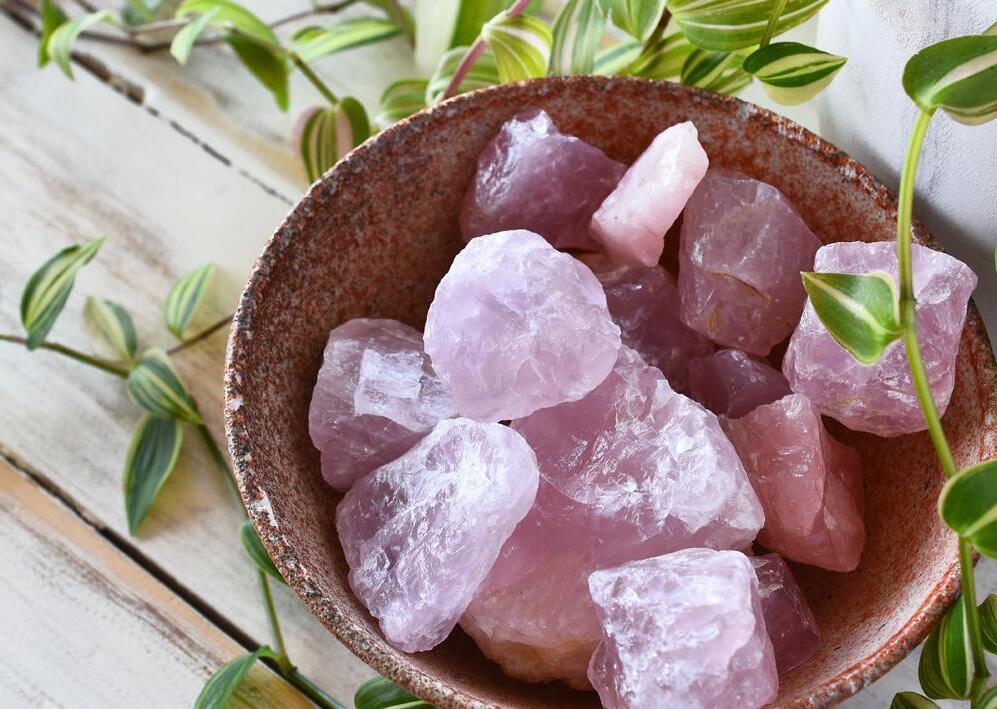
Unlike pink, black is considered a ‘classic’ colour which tends to suit everyone, and most of us wear black items of clothing. Black is considered to be a very spiritual colour, which encourages deep
thinking and introspection, but it can also make us withdraw into ourselves, so we should use it wisely.

The use of the entire spectrum of colours in the food we eat, in our clothes, in our jewellery, and our personal spaces allows us to enjoy their beneficial properties in an immediate and optimal way. So perhaps try to find out your personal wheel of colours, as shown in my book, to find out which ones support you best. But, whichever they are, just try to bring more colour into your life, and enjoy the vibrant rewards.


“If you want to fly, you have to give up what weighs you down ROY T BENNETT
You wake as the sun rises in the morning; you feel the warmth of the animal skin covering your body as you lay on the mud floor of the hut you call home. Nearby, you hear other tribe members rousing. The birds sing in the trees that surround you. You get up and prepare yourself to hunt for food. There is nowhere to work here, your life’s purpose is to survive.
Finding food is intensely challenging, and you are the source of food for your animal cohabitants. Meat is rare, and it might take you and your hunting party days to arrive home with something to feed the tribe. Your body must work efficiently to keep you safe from harm. Danger lurks everywhere, but your body is powerful. When your brain recognises an imminent threat, it will activate your fight or flight
response, so you can run or fight. This innate skill keeps you alive on your dangerous missions.
And then you come back to real life where, in your modern society, there is very little physical threat to your daily life. Food comes from the supermarket down the road, and your next-door neighbour probably isn’t going to eat you.
Frustratingly though, your brain does not differentiate between a genuine threat to your life and a threat to your ego. It cannot tell the difference between real and imaginary. It holds onto previous experiences, and uses them to determine how to behave in the future. So, when you have a presentation to give at work, or a daunting social event, your brain will react similarly to how it would when trapped by a killer animal.
As you now know, anxiety is the body entering the fight or flight response. This involves activation of the autonomic nervous system, and an increase in your heart rate. It makes a lot of sense; your body needs to pump the blood to all the muscles required to fight or flee the threatening situation.
Once the threat passes – you win the fight, or escape – your body should return to the default state, and your heart rate should slow. However, if the apparent danger is not an actual threat to your life – you cannot physically run away or fight – but the perceived threat is persistent, you will remain in the anxious (fight or flight) state. >>>
When you find yourself stuck in a state of fight or flight, with anxiety causing your heart to race, use these five effective methods to regain calm and control
Writing | Juliet Hollingsworth
You can use hypnotherapy or other forms of talking therapy to manage anxiety. However, in the moment, you want to know how to stop your heart from doing what it is doing. It is, therefore, important to know how to calm a racing heart from anxiety, when you have not yet found the time to deal with the anxiety overall.
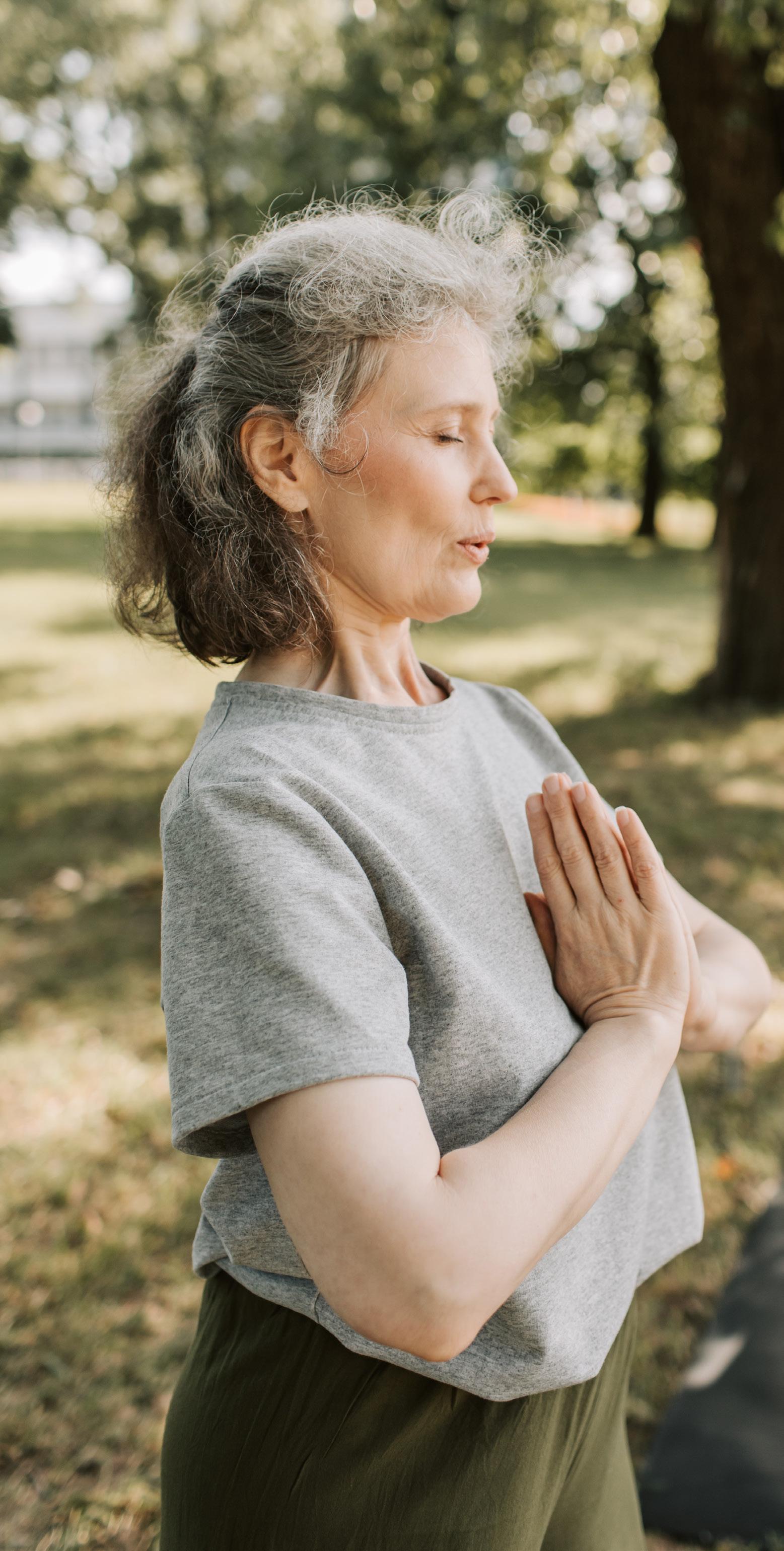
The best trick to slow down your heart rate is to make your outbreath longer than your in-breath. When you inhale, you stimulate your sympathetic nervous system, which increases your heart rate. When you exhale, you stimulate your parasympathetic nervous system, which decreases your heart rate. By exhaling for longer than your inhale, you slow your heart rate. Try counting from one to seven as you inhale, and one to 11 as you exhale.
Anxiety often causes anxiety. For example, the faint feeling of anxiety can frighten you so much that your anxiety grows, and everything feels much stronger. Heart rate anxiety happens when your slightly faster heartbeat makes you fear there is something terribly wrong. Your brain takes this belief on, and strengthens the response. The fast heart rate gets stronger, and you find yourself in a vicious circle. When you make the active decision to use one of the following techniques to slow down your heart rate, you will also lower heart rate anxiety.
How do I know if I have heart problems or anxiety?
There is no harm in a quick trip to the doctor to make sure your heart is in working order. Anxiety is more common than you might think, and certainly more likely than heart problems, but your GP will happily check your heart for you to make sure there is nothing wrong.
If your heart rate is quickened due to anxiety, you can use the following tricks to slow down your heart rate and feel more comfortable:
As per the previous example, when you breathe, make your exhale longer than your inhale to slow your heart rate.
Place one hand on your belly button, and another on your
chest. Breathe down into the belly button space, so this hand rises rather than the one on your chest. Abdominal breathing is the most efficient way to breathe. However, ‘cheating’ by breathing into your chest often becomes the normal way. This is harder when you are in an anxious state, because your chest muscles will tighten to help you run or fight. The tightness further fuels the fear and increases the anxious feelings. Try to consciously make abdominal breathing your ‘normal’ way to breathe.
3.
Hypnotherapy sessions with a therapist knowledgeable about mindfulness will help you learn how to live more mindfully. This will enable you to take control of your thoughts, so you are less likely to drift into the fight or flight response.

Meditation is an effective tool to take your body out of the anxious state, and move you into the default calm state, slowing your heart rate as a result. This is something you should do daily. If time is a restriction, a fiveminute meditation is preferable to nothing.
Exercise is beneficial for all of you – mind, body, and spirit. There is no requirement to exercise intensely, a 30-minute walk each day is good enough, just get your body moving where you can.
Anxiety can crop up when we least expect it, but with these simple yet effective tips, hopefully next time it arises, you’ll feel more prepared to reclaim some calm, and return your heart rate to healthy levels.

If we are truly a nation of animal lovers, isn’t it time we acknowledged that the death of a pet can be as traumatic as the loss of a friend or family member?
Writing | Rochelle HanslowThe UK is a nation of animal lovers; 13 million dogs alone can be found in households across the country, making them the most popular pet to have. One in four social media accounts are for our pets, with 65% of owners posting their pets twice weekly on average. With increasing proof that our pets can also help us with our mental health, it’s easy to see why nobody wants to have the conversation about pet bereavement.
Unfortunately, pet bereavement often isn’t taken seriously in society, and tends to be belittled. It is still a taboo subject but, if not addressed properly, could lead to extensive mental health problems. As a pet bereavement counsellor, here are eight of the biggest pet bereavement myths I’d like to acknowledge.
Myth: It is strange to have intense feelings of grief over the loss, or anticipated loss, of an animal.
People who have strong feelings about the loss of a pet have them because they are capable of deep emotional bonding. In 2021, the UK animal charity Blue Cross reported a rise of 38% in calls from people experiencing grief.
The US-based Human Animal Bond Research Institute released figures in 2022 that showed 90% of pet owners feel extremely close to their pet, with 86% stating they would pay as much as it takes if their pet needed extensive veterinary care. And the impact of their passing is not to be underestimated either, as University of Hawaii research found that 4% of pet owners experienced prolonged and extreme grief.
Myth: Pet loss is insignificant when compared to the loss of human life.
The loss of a beloved pet can be as emotionally significant, sometimes even more significant, than the loss of a human friend or relative. One doesn’t have to detract from the other. Depending on the circumstances (an attack, a car accident, etc) losing a pet can cause PTSD, and trigger unresolved grief and trauma from past experiences. If that animal was a therapy pet for an anxiety disorder, not having that lifeline could be damaging for the owner, as well as adding grief to the situation.
For many, their furry family members are – for a variety of reasons – their children, and to deny them that grief isn’t acceptable.
Myth: It is best to replace the lost pet as quickly as possible. This will ease the pain of loss.

Our pets cannot be ‘replaced’. They are not interchangeable. They are all different individuals, with very unique personalities. People need to feel emotionally ready to get another pet before they can successfully accept a new animal into their hearts and family. For some, they try to bypass the mourning process by rushing out to get a ‘replacement’ pet, or have family who insist on another pet too soon. This isn’t good for people, or for the new animal involved.
Myth: It’s OK to lie to your children about pet bereavement, it saves their feelings.
This can be a child’s first experience and exposure to death, and no matter what type of pet passes, they will remember it into adulthood. If the child has grown up with the animal, there is a bond there that will also never be forgotten, and must be handled delicately. Children are not stupid; they are little sponges absorbing everything around them, so the more open and compassionate you can be in the situation, the better the long-term outcome. It is imperative that you never tell a child that their pet ‘ran away’ or was ‘taken to a farm’. This can actually instil a sense of failure in the child – they believe they haven’t loved the animal enough, making it go elsewhere, or run away – and can cause more harm and hurt than having a real and compassionate conversation. >>>
People who have strong feelings about the loss of a pet have them because they are capable of deep emotional bonding
Myth: Euthanising your pet is a selfish thing to do.
Euthanising a pet can be the most compassionate and humane option to end any intense suffering or declining quality of life for your furry family member. It is actually a selfless thing to do. Having to make this decision can be a heavy burden for a pet owner, and there is the potential for a lot of guilt to arise when this is the situation. Your veterinary team can guide you medically, but they cannot make the ultimate decision.
Myth: Pets don’t mourn for other pets.

It is not yet known for certain that dogs or cats can fully understand the finality or significance of the death of another pet, but cats and dogs are highly in-tune with the emotional state of their owners. Many pets build strong bonds with their companions, and it has been seen that dogs and cats can have adverse reactions and symptoms to the loss of a pet. These could range from loss of appetite, changes in habits (possibly ‘seeking’ their companion), and even changes in vocalisation. Time for adjustment is needed in these situations – for all members of the household unit.
Myth: The best way to protect yourself from the hurt of pet loss is to not get another pet.
Depriving yourself of the unconditional love, and health benefits, of having a pet is a very high price to pay to help insure yourself against experiencing another painful loss. A better course of action would be to take the necessary steps to work through your grief-related issues. Even when you are feeling the hurt of loss, you can still look forward to one day sharing happiness and joy in a new connection with a uniquely different animal.
Myth: The loss of a pet is something you should be able to ‘get over’ alone without professional help.
If you broke your arm you’d go to A&E, so why wouldn’t you go to a pet bereavement counsellor for pet loss?
Those who don’t work through their feelings and reactions about mourning are likely to experience a variety of physical, emotional, and mental health problems later. If you are struggling with the loss of your furry family member, know there is help available, and that you are justified in your grief. It’s our pets’ only fault, that they can’t live for ever.
It’s time for a breather from the stress of the world. So, relax, unwind, and enjoy a few precious moments of puzzling fun Eagle eyes at the ready. Can you spot 9 differences between these images?
Greet a stranger
Jojo: Finally Home
by Johannes Radebe
Johannes Radebe made history on Strictly Come Dancing for performing in one of the first male same-sex pairs on the show. But aside from it being an iconic stance on inclusion, it was also a coming out moment for Johannes which led him to have an open conversation with his mum about his sexuality. Now in his memoir, he shares his journey, triumphs, and truths with hope and joy. (Out 7 September, Hodder Catalyst)

1 2
How often do we rush past people without even glancing in their direction? Let’s make a commitment to change this by taking a moment to say ‘good morning’, and share a smile. Not only will this brighten someone’s day, but it will also bring a little joy into our own lives. After all, we are all human.
‘Tiny Acts of Bravery’ with Clover Stroud
In an honest conversation about bravery and resilience, Clover Stroud invites well-known guests, such as actress Helena Bonham Carter and Ukrainian activist Olia Hercules, to reflect on their personal accounts of bravery, and the valuable lessons learnt from them. Can you think of a time when you had to be brave? (Available on all podcast platforms)
3 4 5
Go on an architectural walking tour
Architectural walking tours offer a fantastic opportunity to learn more about the buildings that shape our cities, and their historical significance. From ancient wonders to modern marvels, lace up for an adventure through time and design within the heart of a city. (Search for walking tours in your area)

Outside with Lira
Enter Lira – the self-proclaimed urban wildlife queen who is on a mission to go above and beyond to help us connect with nature. Her wholesome yet educational content is a breath of fresh air for those trying to satisfy their outdoorsy cravings, while living in the city. (Follow @outsidewithlira on Instagram)
From an educational exploration to a simple act of kindness, try something new and refreshing for your wellbeingWriting | Lauren Bromley-Bird
Did you know that the government has pledged action in the fight against the climate crisis? If you’re someone who is interested in keeping up to date with the latest news, you can check these out on the World Wildlife Fund’s website. It’s an easy way to stay informed and track the progress made.
(Visit wwf.org.uk for more)
9
TodayTix
Theatre is such a great tool for wellbeing, but the cost can make it tricky for everyone to enjoy. That is until TodayTix was launched – a game-changing app for London theatre enthusiasts seeking affordable tickets. Get last-minute tickets at a discounted price, and enjoy theatre in a more accessible and affordable way. (Available on all platforms)

8
Do you find it a struggle to carry the groceries sometimes? Maybe it takes you a while to catch your breath after walking up the stairs? Functional fitness training is all about building your strength, flexibility, and balance so that your everyday activities can become a little bit easier. (Head to YouTube to find a workout)
Unknown: Cosmic Time Machine
In this captivating documentary, join Nasa’s remarkable team of scientists and engineers on their unprecedented mission towards launching their largest telescope to date – the James Webb Space Telescope. What scientific revelations will they uncover on their quest to unravel the mysteries of the universe? That’s for you to find out. (Watch on Netflix)
Botanical Casting Kit by Katie Alred Designs

Katie Aldred’s botanical casting kit from Cosy Craft Club invites you to preserve nature in its most magnificent art form through clay casts, which you can then decorate and display in your home. It’s the perfect mindful crafting pursuit for those who want to try a new hobby or engage with nature in a more creative way.
(RRP £24 at cosy-craft-club.cratejoy.com)
For your chance to win, simply email your answer to the following question to competitions@happiful.com
Which of the following is not a type of botanical?
7 6 10 culture
a) Flower
b) Mushroom
c) Butterfly

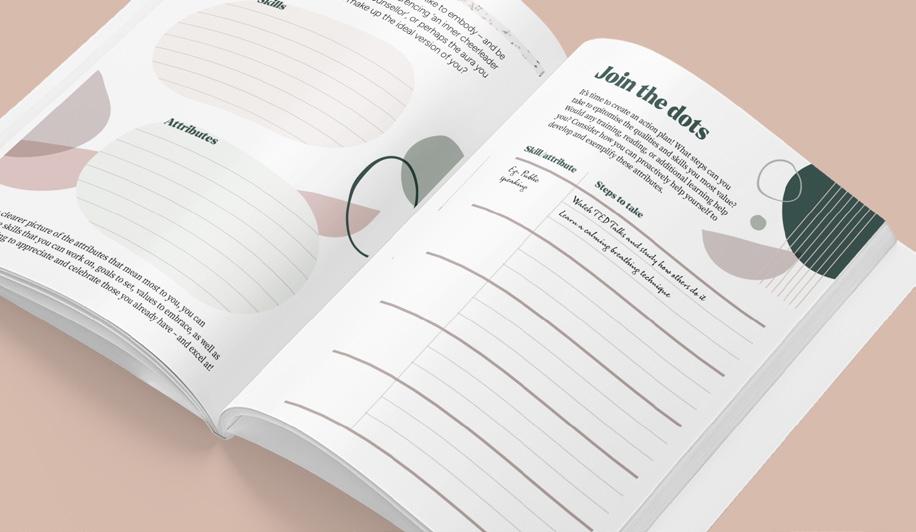



Exploring the hype around social media’s latest, but most authentic, habit and how it could help you
Writing | Fiona Fletcher ReidWhen was the last time you bought something simply because you saw someone you trust talk about it on social media? Shopping habits have changed drastically in recent years, and

it’s easy to see how our decisions are impacted by those we follow online. In fact, Sprout Social reports that 55% of TikTok users have purchased something after seeing the brand recommended on the app, and while reviews and
recommendations can be helpful when considering your options, the problem arises when you find yourself convinced to spend cash on things you didn’t intend to buy. With influencers regularly receiving payment in exchange >>>
for promoting specific items, as well as mental health services such as online therapy, it’s hard to know who to trust.
When it comes to your mental health, unplanned overspending can lead to anxiety around money, as well as guilt surrounding the unused items gathering dust in your home. For the eco-conscious, knowing that you’re potentially adding to landfill through purchases you regret adds another layer of discomfort. It might even lead to a sense of disconnect from your own wants and needs, where you feel unable to make choices without having negative consequences.
But a new movement is rising where, instead of recommending their supposed ‘favourite’ products to their audience, influencers choose to advise you on items you shouldn’t waste your money on. In an online world where paid product placements are now as common as traditional advertisements, marketing statistics from the UK show that 48% of millennial consumers find this marketing model more authentic than other advertising techniques, according to Cure Media.
Whether you’re looking for the best moisturiser, fitness app, or even a new therapist, the choice can be overwhelming when social
recommendations come into the picture. With that in mind, here is how you can lean into the de-influencing trend, and control your spending when it comes to taking care of your wellbeing.

Social media marketing thrives on creating a sense of urgency when you view their content. There’s a certain thrill that comes from being an early adopter of a new wellness product, or finding a well-kept secret that could boost your happiness. But if something is being hailed as a ‘cure-all’ product, or the ‘next big thing’, take it with a pinch of
The problem arises when you find yourself convinced to spend cash on things you didn’t intend to buy
salt. Consider holding back and allowing time to pass before you make a decision. In a few weeks, the buzz may well have faded, and you’ll be pleased you didn’t get sucked into the excitement, without evidence to back it up.
While social media has been a powerful tool for raising awareness about mental health concerns, and has, arguably, done some heavy lifting when it comes to ending the stigma around mental illness, not all information online is factually accurate or relevant. For example, one study in The Canadian Journal of Psychiatry showed that as little as 21% of ADHD-related information on TikTok was scientifically accurate, and roughly 50% of videos were misleading, so you should make sure to crossreference any medical claims with reliable sources before making any related purchases. Be sensibly suspicious of any medical studies that are funded by organisations with a vested interest in the outcome.
Science tells us that we love to make an impulse purchase, because it gives us pleasure. Take a brief pause before you add-to-cart, and consider exactly what emotion you are trying to evoke with each particular purchase. Joy? Calm? Rest? Energy? Now write down a list of 10 ways you can elicit this emotion, either for free or through existing means. For example, instead of a calming pillow spray,
you might decide to meditate for a few minutes before bed.
There are tons of helpful posts on social media, which are written by bona fide experts in their field. It can be tempting to jump straight into buying a course or paying hundreds of pounds to have a consultation with someone, but many authors and coaches have blogs and podcasts that are filled with free, readily available information to give you a taste before you commit. Looking to try meditation? Before subscribing to a new app, check Eventbrite for free events, or your local Buddhist centre for taster sessions. Thinking of booking Reiki? Call your local practitioner to talk it through, and find out if it really meets your needs. Aim to find a way to dip your toe before you dip into your purse.
Whenever you’re tempted to make an impulse purchase, make a note of the item and the cost. You’re essentially keeping track of the things you desired but didn’t buy, which gives you a lovely list of all the times you exerted impulse control. Go you! At the end of the week, check the list to tally up how much money you’ve saved. If there’s anything on the list you still want to buy, now is the time to spend mindfully.
When it comes to entering those card details and making your
purchase, take a few minutes to write down the emotions associated with what you’re buying. Try this technique:
• Take a few deep breaths, and open your journal.
• Now, imagine that you’re holding the item or experiencing the service you want to buy. Envision yourself using the product or service. Journal from that perspective, describing how you feel, how your life has been changed, your mood, and the impact on your mental health.
• Once you’re finished, start another journal entry that takes place on the same day but without the product or service in question. Write about how you feel, how your mood is, and what your mental health looks like.
• Is there a tangible difference between the two? Is the outcome of making the purchase worth the money you intend on spending?
Social media might have become ingrained in our lives, but the call for more authenticity is always a welcome one. So, just remember, next time you’re urged to purchase a must-have item from someone you follow, take a moment to pause, and consider whether this is something you actually need – you might just discover deinfluencing is the biggest gamechanger after all.
Fiona Fletcher Reid is a freelance writer and author, whose book, ‘Work It Out’ is available now (Welbeck Balance, £9.99). Visit fionalikestoblog.com for more.
are capable
You don’t need anyone’s approval and you are enough, just as you are
In case you need to hear this today... you are kind you are compassionate you are strong you
With half a million people in the UK living with inflammatory bowel disease, this painful, debilitating condition affects around one in 123 people. Navigating the ins and out of the condition can be difficult, and finding the right foods to eat is stressful, but here, writer Jenna Farmer, who has Crohn’s disease herself, helps you navigate how to find the right diet when living with IBD
Writing | Jenna FarmerInflammatory bowel disease (or IBD for short) is an umbrella term used to describe Crohn’s disease and ulcerative colitis, which can cause both painful and distressing symptoms, including fatigue, stomach pain, diarrhoea, bleeding and mouth ulcers, to name but a few.
When diagnosed, what they eat can cause a lot of confusion for patients. Some may notice a direct correlation of worsening symptoms after eating certain foods, while others will feel clueless and unwell whatever they eat.
It’s important to note that diet cannot cure or necessarily control IBD symptoms, but many patients do find it a helpful strategy to figure out potential trigger foods, alongside taking medication.
Studies have shown most patients with IBD do recognise that diet plays a part in their condition, with one published in the journal Digestive Diseases finding that 59% thought diet was more or of equal importance to the medication they took in controlling their condition, and 77% restricted certain foods.
While most say diet plays a part, that doesn’t mean they have it all figured out: research in BMC Gastroenterology suggested that patients found this a struggle and stressful, and part of that is because they’re not necessarily receiving the right support. Like any chronic condition, support from a dietitian should be available, but not everyone is able to access them.
“Every single person with IBD deserves high-quality,
personalised, joined-up care, allowing them to live a full life, but a recent review of IBD services found that only 7% of services had enough dietitians to meet IBD standards,” says chief executive of Crohn’s & Colitis UK, Sarah Sleet.
Trigger foods are items you consume that can appear to make your symptoms worse, although this doesn’t necessarily mean they impact your condition directly.
“It’s really important to clarify that just because a food triggers symptoms, it doesn’t mean it’s triggering inflammation,” explains Clemmie Oliver, IBD specialist nutritionist and founder of the NALM >>>
For more information about Crohn’s disease and ulcerative colitis and how they may be affected by diet visit crohnsandcolitis.org.uk

Clinic. “Different foods have mechanisms by which they may trigger symptoms in people with Crohn’s, for example, when they eat milk/cream they get symptoms like bloating and diarrhoea – this isn’t because its triggering inflammation (but the symptoms can sometimes feel similar to a Crohn’s flare up), but instead its an issue with their ability to digest the naturally
occurring sugar in dairy called lactose. Lactose intolerance is more common in people with Crohn’s disease, particularly in those with Crohn’s affecting the small intestine.”
Triggers are different for everyone, but there are some common ones that many people with IBD have, which may be a useful starting point to explore.

“Data from research studies on patient-reported symptom trigger foods in IBD found 12 foods were most commonly reported: milk/cream; dairy products; spicy foods; raw nuts and seeds; red and processed meats; corn and popcorn; raw fruit; vegetables; beans and lentils; sweets and added sugars; high fibre foods; and citrus fruits,” explains Clemmie. “Not every person with Crohn’s will have issues with all of these, but they can be a useful place to start.”
Some prefer to keep a food diary over a period of a few weeks to see if they can figure out which of these foods could be an issue for them, but it is important not to eliminate lots of foods from your diet –especially since patients with IBD are at risk of malnutrition. “No restrictive diet should ever be used without the guidance and support of a specialist IBD dietitian or nutritionist, as restriction can increase the risk
of nutrient deficiency, and have a negative impact on Crohn’s disease,” adds Clemie.
While many patients focus on excluding foods, it is important to recognise the role of the diet as a whole, too.
When you’re flaring, you may feel as if you can’t eat anything at all. In some cases, you may be prescribed a 100% liquid diet (sometimes referred to as enteral nutrition). This is when your doctor prescribes you specially created liquid drinks (common brands include Ensure and Fortisip) to meet all of your nutritional needs. Of course, this isn’t usually a long-term measure, but can be a very useful shortterm strategy that allows patients to rest their digestive tract.
While the low FODMAP diet isn’t specifically for IBD, we do know that it is very helpful with irritable bowel syndrome (IBS) symptoms. This is important as many IBD patients may also experience IBS symptoms too
when in remission, around 40% in fact, according to a study in Gastroenterology & Hepatology. The low FODMAP diet centres around limiting short-chain carbohydrates – such as those found in apples, wheat, and milk – as they can ferment in the gut and cause digestive symptoms.
The Mediterranean diet hit the headlines last year when it was shown specifically to improve symptoms of patients with Crohn’s, with 43.5% of those who followed it for six weeks achieving clinical remission in a study funded by the Crohn’s & Colitis Foundation and the Patient-Centered Outcomes Research Institute. The Mediterranean diet is centred around fruit, vegetables, wholegrains, and fish, and avoids red meat and processed foods.
“Generally, research is pointing towards a Mediterranean diet as a way of eating that may be beneficial not only for Crohn’s disease, but for overall health and reduced risk of diseases like cardiovascular disease, and type 2 diabetes, so this is a good place to start,” says Clemmie.
Although there’s some evidence that the diets mentioned here could be useful, it’s still important to figure out what works for you and your body. If you’re overhauling your diet, you shouldn’t have to do it alone.
“Patients can get dietary support through a specialist IBD dietitian who may be part of their IBD team. If this service is not available, there are specialist IBD dietitians and nutritionists that work privately. It’s important to ensure that anyone you work with has the right qualifications and experience with Crohn’s disease, so you get the right care and advice,” says Clemmie Oliver.
While diet is only one part of IBD, it is an important one. As always, if you are thinking of making any changes to your diet (especially when restricting trigger foods), it’s always important to speak to your doctor first.
Jenna Farmer is a freelance journalist who specialises in writing about gut health. She has Crohn’s disease, and blogs at abalancedbelly.co.uk
Every single person with IBD deserves high-quality, personalised, joined-up care, allowing them to live a full life
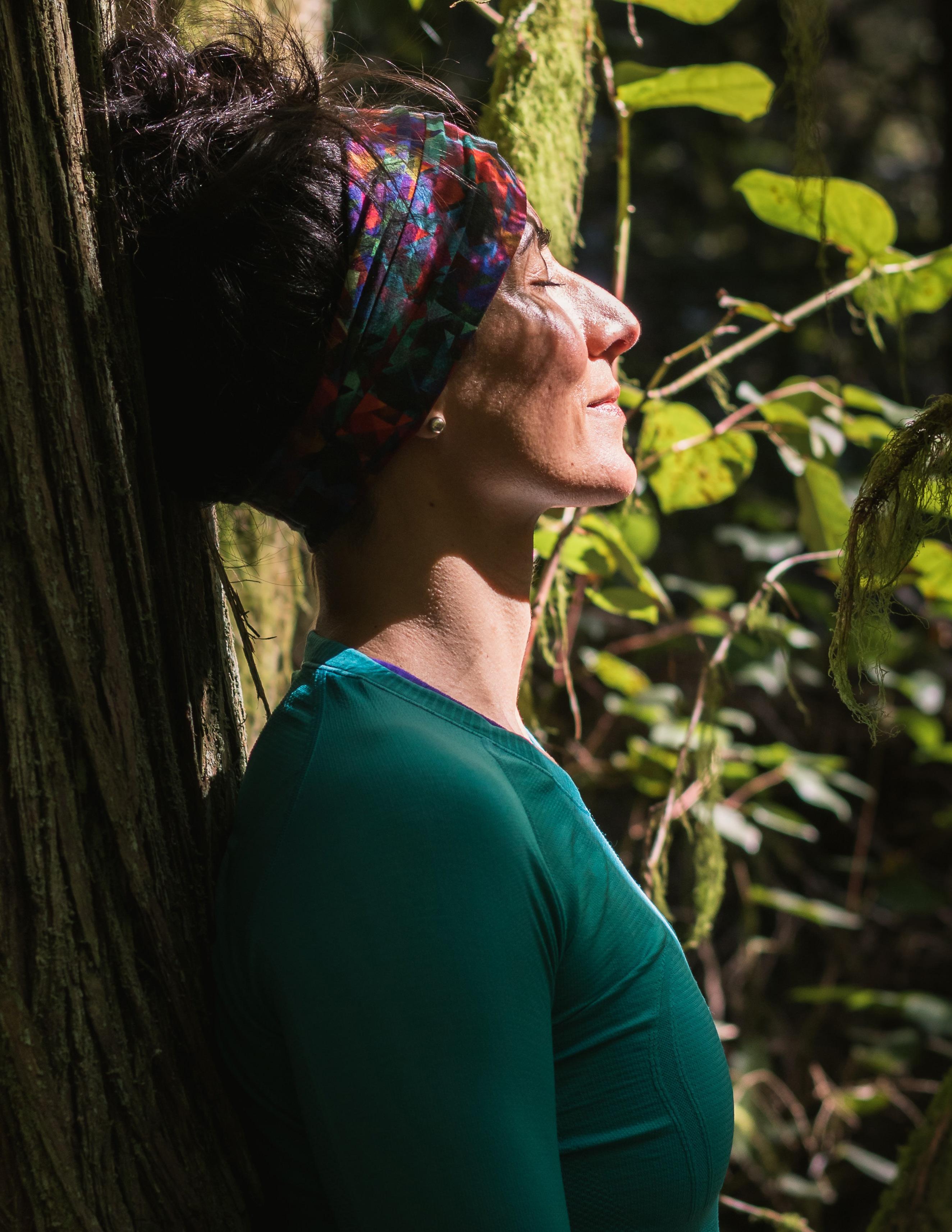
“Life itself is the most wonderful fairy tale
HANS CHRISTIAN ANDERSENPhotograph | Greg Rosenke
Films can make for the perfect escape from reality, something that we all could benefit from every now and then. But those benefits are slightly tarnished when we come face-to-face with uncomfortable (and, sometimes, downright problematic) tropes and stereotypes.
Here, we’re working through four tropes that need to stop, and four more that we can’t wait to see more of. Lights, camera, action!
You know the set-up: dad’s useless (but totally loveable). He forgets things, gets mixed up, doesn’t know how to connect with his children, and struggles to fulfil basic household chores. He’d much rather sit down to
watch the game, occasionally cracking some hilarious oneliners. At the same time, mum frantically rushes around the house, barking orders at anyone who will listen, her stress levels through the roof.
They’re the kind of tropes that lead to real-life dads being asked if they’re on ‘babysitting duty’ while simply caring for their children, and which make light of the women struggling with taking on an overwhelming amount of emotional and domestic labour (‘She’s such a nag, why can’t she lighten up?’). Not only that, but they minimise parenthood to stark stereotypes, leaving no room to explore and celebrate the realities of parenthood – with all its joys and its challenges – as well as the full, complex people, with needs and desires, that we still are after becoming parents.
It’s news to no one that Hollywood has a body diversity problem. And although strides have been made in recent years, as discussion around body positivity and diversity has made the mainstream, overwhelmingly, the same body types are seen on our screens. This trope maintains the idea of a particular standard for beauty. It leads us towards the idea that only people who look a certain way fall head over heels in love, or stand up for what is right, or make good and fair leaders. And while this is something that has been well documented for women since the advent of cinema, increasingly, the body standards for men have been transformed by the hypermuscular ideals we see in films today. So while the goalposts for the perfect body keep on moving, we think it’s about time to red-card this one. >>>
From the annoying to the downright dangerous, we’re breaking down film tropes that we need to call curtains on
Writing | Kathryn Wheeler
From ‘hot-headed’ Latina characters, to ‘exotic’ Asian women, ‘sassy’ Black women, and ‘aggressive’ Black men – the racial stereotypes go on, but they need to stop, immediately.
These kinds of tropes have real-life implications, potentially feeding into to everything from over-sexualisation to police brutality. What’s more, they force real, full, complex humans into boxes, which affect the ways that they’re able to navigate the world. Views based on stereotypes can impact hiring decisions, relationships, and even lead to health inequalities due to unconscious bias.
Change is certainly coming. But, as research from US campaign group Color of Change found that more than 90% of showrunners are white, and two-thirds of shows had no Black writers at all, it’s clear we have some way to go to diversify our screens.
Nothing of any interest happens to anyone past the age of 39, right? Wrong, of course, but not if we took notes from this common film trope. Yes, older people may crop up here and there, but you’ll most likely find them taking on the role of ‘mentor’, guiding the (younger) main character through their arc, and remaining firmly on the sidelines of the action.
Not only does this contribute to a sense of invisibility in people over a certain age, but it also adds to the idea that you need to accomplish all you want to do in life early on. The truth is, we still find adventure, love, and lessons later in life – in fact, those experiences may even be richer this time around, owing to all that has come before them.
Our friendships enrich our lives in so many ways, to the point where
studies have found that adults with strong social connections have a reduced risk of significant health problems, including depression and high blood pressure. Seeing these kinds of relationships playing out on screen leaves us with that warm, fuzzy feeling, but also brings them to the forefront of culture – celebrating them for the life-enhancing qualities they possess.

It’s also particularly important to see platonic relationships between men and women. Whether that be in the workplace, in friendship groups, or just out and about. Watching men and women be there for each other, championing each other, and enjoying each other’s company, without ulterior motives, is a breath of fresh air that we’re totally here for.
‘Queer joy’ is all about celebrating the everyday happiness that comes with queer life. There’s no use ignoring the struggles that
those in the LGBTQ+ communities face, but exploring the day-to-day happiness of queer lives is another important step for progress and representation.
Joy also helps us stay resilient, and sustains us when things get tough – something that can be a difficult reality for some in the community. And so, when we see examples of queer joy on our screens – including everything from long-term same-sex couples to transgender characters going about their lives freely – it’s not only a window into a kinder world, but inspires the hope and positivity that is so vital to continue working towards safety and equality for all.
Just so we’re clear, ‘being evil’ isn’t a requirement for step-mothers, and the nuclear family is far from standard these days – so it’s about time the realities of modern families were represented on our screens. In fact, according
to Happy Steps, a stepfamily resource centre, one in three of all UK families are now ‘blended’ – referring to a family where parents may have new partners, and children may be from different relationships.
Stories that feature alternative families – whether that be blended families, adopted families, LGBTQ+ families, multigenerational, or any other combination – can be fascinating to see play out on the screen. Coming with equal shares of unique challenges and unique joys, this is a set-up that offers limitless possibilities, and we’d love to see more.
One in four people will experience a mental health problem in their lifetime, and so getting it right on screen is really important. It can help tackle stigma, by exploring the realities of living with mental health problems – or supporting a loved one. It provides the
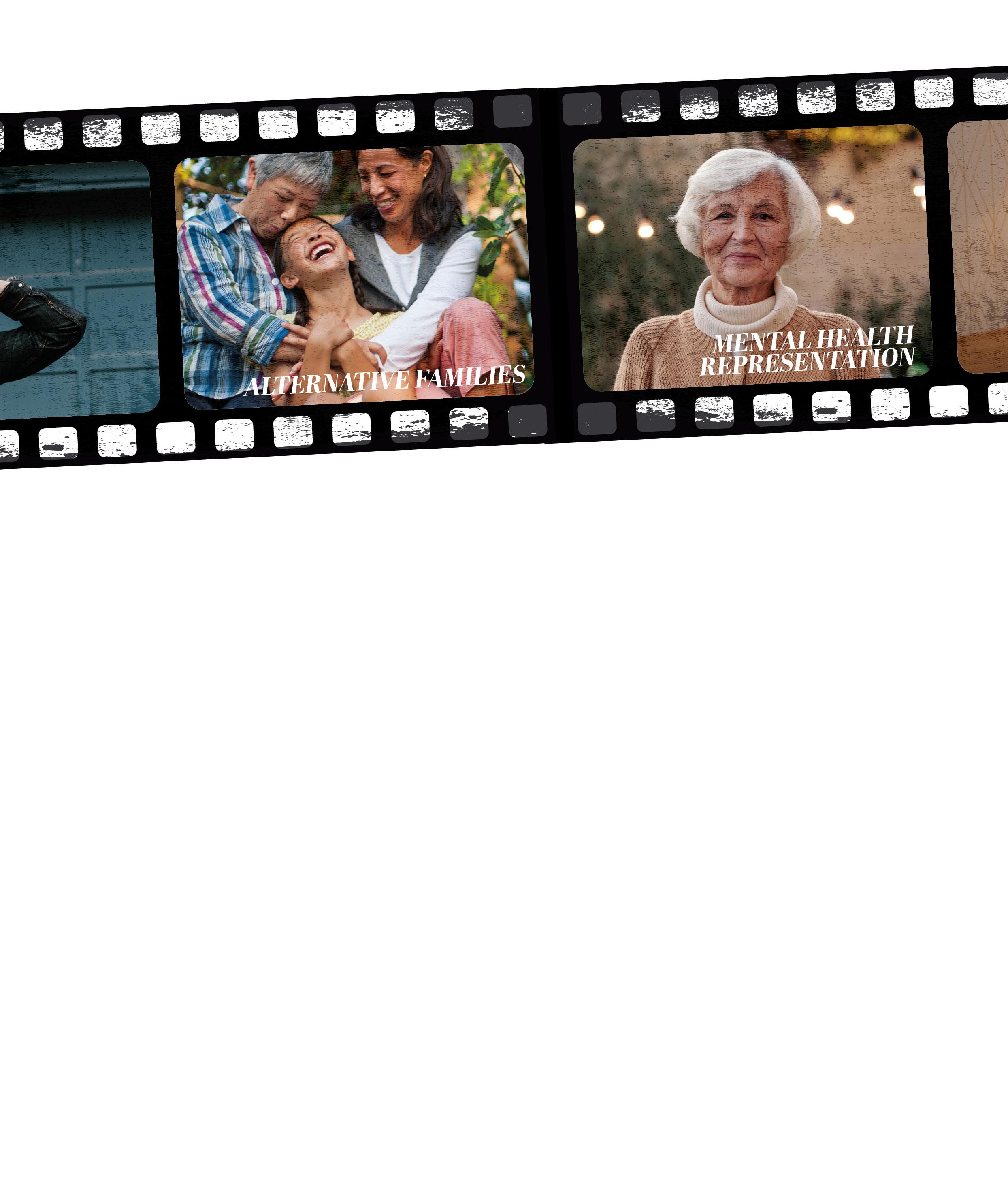
opportunity to explore some of the lesser-known experiences that can come with mental health conditions, starting a conversation out in the real world. And it can also be a prompt to talk about these topics with the people in our own lives.
‘Getting it right’ is all about authenticity, and also about compassion and sensitivity. We’re way past the point of being OK with mental illnesses on screen simply being a tool for creating fear – and are ready to see complex, impactful stories. Stories where characters find support, or where they live alongside mental health problems each and every day, as so many do, are an opportunity to explore something that touches the lives of so many. We’d press play on that.
Joy helps us stay resilient, and sustains us when things get tough
Why don’t you try putting yourself in my shoes?”
It’s a phrase many of us have used, whether in the middle of something as personal as an explosive argument with a loved one, or a professional disagreement with a co-worker. Though it’s a statement that’s often brushed aside after the heat of the moment, doing exactly that could have been the solution to solving the tension.
As someone with borderline personality disorder, I regularly struggle with my sense of self, as well as an emotionally unstable perspective of how others see me. Often wondering why people say or act in a certain way towards me – be it positive or negative – I have spent a lot of time questioning every interaction I’ve had.
To manage this, I was introduced to the concept of mentalisation, which is one element among others of mentalisation-based therapy (MBT), a type of long-term psychotherapy used to treat personality disorders, eating disorders, depression, and more.
While MBT is a fully-fledged therapy aimed at fostering trust
and secure attachments among people who experience longterm difficulties in relationships, as well as intense emotional distress, the specific technique of mentalisation can be a practical tip for all.
In just three simple steps, mentalisation helps us see ourselves from an outside perspective, as well as see and understand the behaviour of others from their perspective rather than our own, to build healthier relationships with others and yourself. Ready to try it?
The first step of mentalisation involves thinking about a relationship or situation in your life. This step is all about your perspective on the matter.
Start by identifying your personal feelings about your needs from the relationship, goals of the relationship, reasons to keep the relationship, as well as any other specific thoughts about that particular relationship – and note these down.
Drawing from a personal experience, as someone with
severely low self-esteem, I have struggled with accepting compliments from people, often dismissing them as just empty words.
Once, when I was complimented on my professional success by a former classmate, my first instinct was not to be flattered, but to wonder why she would say anything nice to me. Suspicion came to the forefront with the question, “What does she want from me?”
In this particular case, the first step of mentalising was to identify the dynamic I shared with my classmate. What was my relationship with her? Why did she give me this specific compliment at this point? Are there any reasons that warrant this compliment, such as any achievements – big or small – I’m proud of?
I identified that while my classmate and I weren’t close, we respected each other’s skills. She was struggling in her career path and sought to compliment me, and seek out my advice. And, yes, upon reflection, I had achievements that made me worthy of her compliments.
It’s a therapeutic tool that helps you gain a new perspective, so how can we apply mentalisation to our everyday interactions?
The next step of mentalising involves doing the same thing of identifying personal feelings, but this time from the other person’s perspective.

Try to imagine answers from the other person in the relationship. What would they need from our relationship, what might their reasons to keep this relationship be, and what are their thoughts and feelings about their relationship with you?
Taking the example I provided, I put myself in the shoes of my classmate and began noting down how I believe she may have viewed our dynamic.
Stepping outside of my own head and view of myself, I asked how she viewed me and why she would continue to reach out to me. I came up with the answer that perhaps she saw me as someone successful, and as someone who was at a point in a career that she aspired to. She continued to reach out to me because she trusted, on some level, that I wouldn’t rebuff or ignore her.
Now that you have two sides of the same relationship noted down, the final step of mentalisation is to compare
and reflect on the two different perspectives (self and other). Don’t just stop with comparing, take a moment to reflect on how you felt imagining the other person’s emotions, needs, goals, reasons, and thoughts about their relationship with you.
This helps you empathise with them, but also see yourself in a better light; the way they might be seeing you!
In short, evoking this empathy is the basis of mentalisation. So take a moment to mentalise, to see ourselves from the outside and others from the inside as we all continue to work on making sense of each other.
It’s time to put a spotlight on people-pleasing behaviours, as our expert columnist Kieran Townsend shares healthy ways to set expectations, reinforce your boundaries, and learn that it’s OK to say ‘no’
Are you too nice? This might sound like an odd question at first, but in our efforts to be kind, helpful and supportive, there are times when this can become a negative, harming your wellbeing if you feel overwhelmed, overworked, or overlooked.
Whether it’s become a method to avoid conflict, due to a fear of disappointing someone, or wanting to do your bit to be a team player, there are techniques and approaches you can follow to help you redefine what’s essential, and learn to put your own needs first.

For many of us, yes might have become our default answer if we want to please people, be polite, and not upset anyone. But when did saying no become so difficult? Becoming aware of this pattern is vital, because with awareness we can start to make changes. Try to notice how often you say yes to things, what sort of things they are, and how this makes you feel.
If you struggle to say no, try to create some sort of gap when asked to do something, to allow yourself space to think before committing. This might be to say that you need to check your calendar first and will come back to them, or even that you can’t commit 100% right now, and to ask again at a later date.
Lastly, don’t fall into the trap of saying yes initially, while knowing that you will bail at the last minute – especially if someone has gone to the effort of organising something or will be relying on you. A quick no is better than a late notice one.
I came across this from Derek Sivers’ “Hell yeah” or “No” idea. The TED speaker and entrepreneur advocates for the fact that if your response is not a ‘hell yes’, then don’t do it. This rule can be very useful to prevent overwhelm, and to whittle down what really is a priority for you. And while I do like this rule, in real life there are responsibilities
(household chores etc.) we need to do which won’t exactly fall under a ‘hell yeah’ reaction. So, for me, this rule lends itself more to additional work projects we have been asked to get involved in, non-essential meetings, or social engagements. While you shouldn’t always have to explain why you’re saying no, more so for work purposes, you may find having one useful reason gives you the confidence to stand firm in your decision. E.g. saying you can’t attend a meeting because you have a deadline which requires your focus, or saying no to a friend’s social engagement to spend time with your family. As a starting point, experiment and get into the habit with some ‘mini nos’ to things which are not overly important. Reflect on the outcome; did it make a difference?
Putting in place boundaries can be a proactive way to protect your time, and be more selective with what you are saying yes to. These might come through purposeful actions you take or conversations you have, and could be in relation to time, energy, or money. For example, asking colleagues not to disturb you when you have a particular ‘status’ on a work messenger, or adding ‘focus time’ blocks into your calendar and treating them the way you would any other important meeting. In your personal life, it might be that you have a chat with your partner that when you come in from work you have 10 minutes to yourself to unwind from the day.
One way I applied this recently was after coming back from a week away I left my out of office on for an extra day. The result of this was less emails came through, and that I could catch up on priority items.
Increasing our self-awareness can help with what we say yes to. This might be knowing what values are important to us, or what our definition of success is. For example, if helping others is an important value to you, then saying yes to helping a colleague with a project might actually align with this.
A useful metaphor is shared in The Art of Stopping Time, where
Pedram Shojai talks about a life garden which consists of key areas in our life being represented by the flowers. These all need time and energy to flourish and grow. We have room for five to 10 ‘plants’ in our garden, so we have to be selective about what we focus on and allow into our garden, in order to have the capacity to nurture them properly. With this as our guide, it can help shape what we say yes to, and develop more understanding of why we do have to say no sometimes.
Knowing how easy it can be to fall into people-pleasing patterns, it can be worthwhile considering how you can create an environment where other people are also able to say no. Promoting a culture where it’s OK to decline requests, and not just go along with everything all the time, will help set healthier expectations for everyone, including yourself. There are some practical ways you can think of others, in terms of what they might feel compelled to say yes to. Firstly, if you are working outside of usual hours, include in the email or message to respond when it’s convenient for them. Better still, if no response or action is required then mention this. It’s a win-win, meaning they don’t have to do anything further, and it’s one less email for you to read!
Saying no in our culture does tend to have a bit of a stigma attached to it. But, hopefully, some of these ideas can allow you to embrace it, with practical guidance on using this effectively to focus on what is truly important to you.

Perpetuating negative stereotypes, minimising people’s experiences, and encouraging guilt or shame can be just a few of the consequences of not being careful with our language… But it’s time that changed
Here are a range of common phrases that you might use, without the intention of offending anyone, but that can actually be quite harmful. More often than
That’s crazy.
not, they’re used in conversations by people not experiencing actual mental illnesses, without an awareness of the stigmatising impact of throwing out these
Instead, say...
That’s unbelievable. No way, I can’t believe it!
I’m shocked.
phrases so casually. So, try to keep them in mind, and consider how you can do your part to reduce stigma by choosing your words more carefully in future.
I’m so OCD.
I can be a perfectionist. I like to be organised. I’m a bit particular how I like things.
You’re being paranoid.
Try not to overthink it. I think you might be worrying too much. There could be a reasonable explanation.
I’m upset about this.
I’m so depressed.
I’m not feeling myself at the moment. I’m feeling really down about it.
I’m addicted to this new show.
I absolutely love this new series. I can’t stop watching it. I can’t get over how good this series is; I really recommend it.
My ex is a psycho.
We had a really toxic relationship. Their behaviour was unreasonable. My ex had a lot of red flags.
Perceptions of what it means to have a psychotic episode are often distorted by the media and misinformation, so here, Katie Conibear is pulling back the veil to reveal their first-hand experience of what psychosis is really like, and, crucially, how they manage it
Ihaven’t been sleeping, and I’m feeling exhausted, stressed, and overwhelmed. I’m in the early stages of psychosis. It starts with voices. Voices that I can’t understand, who chatter incessantly in my ears, and all around me. It feels as if I’m in a crowded café, and the room is heavy with voices. Sometimes they’re raised, sometimes they laugh or shriek and it makes me jump. Occasionally, the voices are quieter, and fall to a whisper, so I can’t quite make out what they’re saying, or if they’re speaking to me.
Then, the psychosis morphs into something else, and I start to have delusions alongside the auditory hallucinations I’m experiencing. I start to believe something is wrong with my internal organs. I have no evidence of this, and I don’t feel physically unwell, but the belief something is seriously wrong is incredibly strong. I start to
believe my organs are decaying. I feel nauseated and can no longer eat, except for bites off a plate every couple of days. I feel increasingly distressed, and as if I am about to die.
This was one of my personal experiences of psychosis. It’s something I have lived with on and off since I was a teenager, but psychosis looks different for everyone, and there are a multitude of differing experiences. There are a range of different types of hallucinations (seeing, hearing, or feeling something that isn’t there) and delusions (having a belief that isn’t true). Some people only experience hallucinations, others delusions, and for some, as I’ve described previously, both. It can be disorienting and scary to experience hallucinations and delusions. However, some people also have positive experiences of psychosis. Some people can find the voices they hear comforting

and supportive, but this isn’t the same experience for everyone.
Psychosis is challenging to live with, as it can feel as real as your partner or best friend talking to you, or a belief you know is true, like how two plus two equals four. So, it can be difficult for others to challenge, or for you to challenge, your thoughts and beliefs. Often, it leads to a loved one intervening, and getting help on your behalf. What I’ve described was a rare episode where I did retain some awareness. I think because what I was experiencing was so unbelievable, logically I knew it couldn’t be true. However, the feeling something was happening to me internally felt so real and visceral it was becoming harder and harder to deny. I told my partner how I was feeling, and he knew straight away I was experiencing an episode of psychosis. >>>
To ensure your loved ones know what to do in an emergency, preparing the following can be helpful:
• Record the contact information for any doctors or mental health professionals supporting you.
• Note down any early signs you might be experiencing during a psychotic episode, so they know what to watch out for.
• Specify any medications or treatments you’re currently having so they have up-todate information.
• If you have any specific wishes related to your treatment, write them here in advance to help inform decisions.
I was under the care of a psychiatrist and mental health team, and my partner was able to contact them and organise an emergency appointment. After speaking to my psychiatrist, my medication dosage was changed, and we discussed whether I might need a stay in hospital. I didn’t want to do this, so I was closely monitored by my mental health team until I started to feel better. If I had become more unwell and a danger to myself, I would have needed a stay in hospital though.

The most important thing to do if you’re experiencing psychosis is to get support from a medical professional as soon as possible. This might mean a loved one contacting your GP or mental health team for you, as psychosis can make you feel personally as if there is nothing wrong.
Something that can be incredibly helpful is creating your own crisis plan in advance, so your loved ones understand what they need to do if you’re experiencing psychosis, and what your early signs of an episode look like. Make sure you share with them important phone numbers so they can get support for you from the right place quickly, and know of any specific wishes you have in relation to your treatment so they can support you in the best way possible.
There are a number of ways to try to support your ongoing mental wellbeing, and preventative methods to help your general mental health. Number one is making sure you get enough sleep, followed by keeping stress to a minimum, which I know is easier said than done! Sleep and stress are common triggers for a psychotic episode, but there are others, too. Misusing alcohol and other substances can trigger psychosis, or exacerbate mental
illness connected to psychosis. I made a decision to go sober for my mental health, and it has made a tangible difference to me. It also means I sleep better, as in the past I have been prone to bouts of insomnia.
There are hobbies that can help manage stress as well, and I’ve also found activities which keep my hands busy help ground me in reality. These can be activities such as gardening, sketching, painting, woodworking, crocheting, or sewing – anything where you’re focusing on the moment and what you’re doing, and using your hands. When it comes to the symptom of hearing voices, I have found that listening to music, or even watching a favourite TV show or film, with headphones helps me separate the noises into which are real and not real.
It’s also invaluable to have a dependable, compassionate support network. This could be made up of family, friends, a mental health team, a therapist, and even supportive colleagues or classmates. Having people around you who understand psychosis, know what to do in a crisis, and can spot when you’re becoming unwell, can make a massive difference. Knowing I have a partner and friends who are available to listen when I need to talk – or even when I need distracting from voices or a
delusion, makes me feel calmer, safe, and secure.
Now, I’m in a much better place. I haven’t had a serious psychotic episode since the one I described. I’ve had what I call a few ‘blips’, where I experienced hallucinations, but this has been due to extreme stress – which I’m working on managing through exercise, mindful hobbies such as gardening and painting, and developing my night-time sleep routine. Having support from my partner and friends is incredible, and I’m always grateful for them. My partner and I have looked at my crisis plan, and made some changes so it’s easier and clearer for my partner to follow.
I live with bipolar type 1, and psychosis is a symptom of this condition (but not for everyone with bipolar). This is an illness I will have for life, so I’m constantly learning how to manage it through medication, therapy, and lifestyle changes. I will probably have psychotic episodes again, but I have plans in place for when it happens, which makes me feel safe and secure that I’ll be OK, and make it through.
Katie Conibear is a writer and mental health advocate. Their first book, ‘Living at the Speed of Light’, about bipolar disorder, is out now.
When it comes to planning the next holiday to look forward to, why do so many of us enjoy returning to somewhere we’ve visited before? And is sticking to familiar places a good or bad thing?
Isit back, drink in my hand, and watch as a jazz band takes to the stage. I’m at Zeffirellis, my favourite restaurant in the Lake District town of Ambleside, and feel right at home.
While I love visiting new places, there is something to be said about the joy of returning to somewhere familiar. A survey by Norwegian Cruise Line found that three out of four people revisit the same holiday destination each year, whether it’s relaxing on a beach we’ve stepped across many times before, enjoying the British countryside, or exploring a city we make a regular pilgrimage to.
But what is it about going to the same place that appeals to so many of us?
“When we visit a familiar place, we know what to expect. We feel safe and we can let our guard down,” explains counsellor Georgina Sturmer. “This means we can offer our minds and
bodies the opportunity to relax and recharge.”
“For those of us with wellbeing or mental health challenges, returning to the same place, staying at the same accommodation, eating at the same restaurants, and visiting the same sights can offer a sense of stability in a world awash with uncertainty and unpredictability,” adds counselling psychologist Dr Stephanie Okwu. “As a consequence, this might offer a sense of calm, comfort and security, which may have proved a greater challenge at a new holiday destination.”
As brilliant as travelling can be, many of us find it a stressful experience. It can be overwhelming researching a new place, especially when there’s so much information out there, combined with nerves about whether we’ll enjoy ourselves, or anxiety about something going wrong. In contrast, we largely know what to expect when we return somewhere.
But revisiting a favourite place goes beyond dealing with anxiety. “It’s the familiarity mostly, we find comfort and a sense of safety in what we already know,” says travel coach Chloe Gosiewski. “When we go to a new place and all of our senses are ignited, and we have an exhilarating or relaxing time, we tend to want to recreate that experience again and again. So, for a lot of people, their natural instinct is to return to the source of happiness.”
The Lake District is an important place to me. It’s somewhere I would regularly visit as a child, as my grandparents lived there, and I have lots of lovely memories – from swimming in lakes and wandering through woodland, to climbing mountains. I returned as an adult with my husband, and now it’s somewhere that matters to us both, making it extra special.
During the pandemic lockdowns, the two of us would talk wistfully about where we would go when we could safely travel again. “Ambleside,” we
both said – and it’s the first place we holidayed to when restrictions allowed. Wandering its familiar Victorian slate streets, hiking through the fells, and relaxing with a drink in our favourite restaurant, it was a joy to be back.
Of course, there are benefits to seeing new places and embracing new experiences. So, can repeatedly visiting the same place ever become a negative?
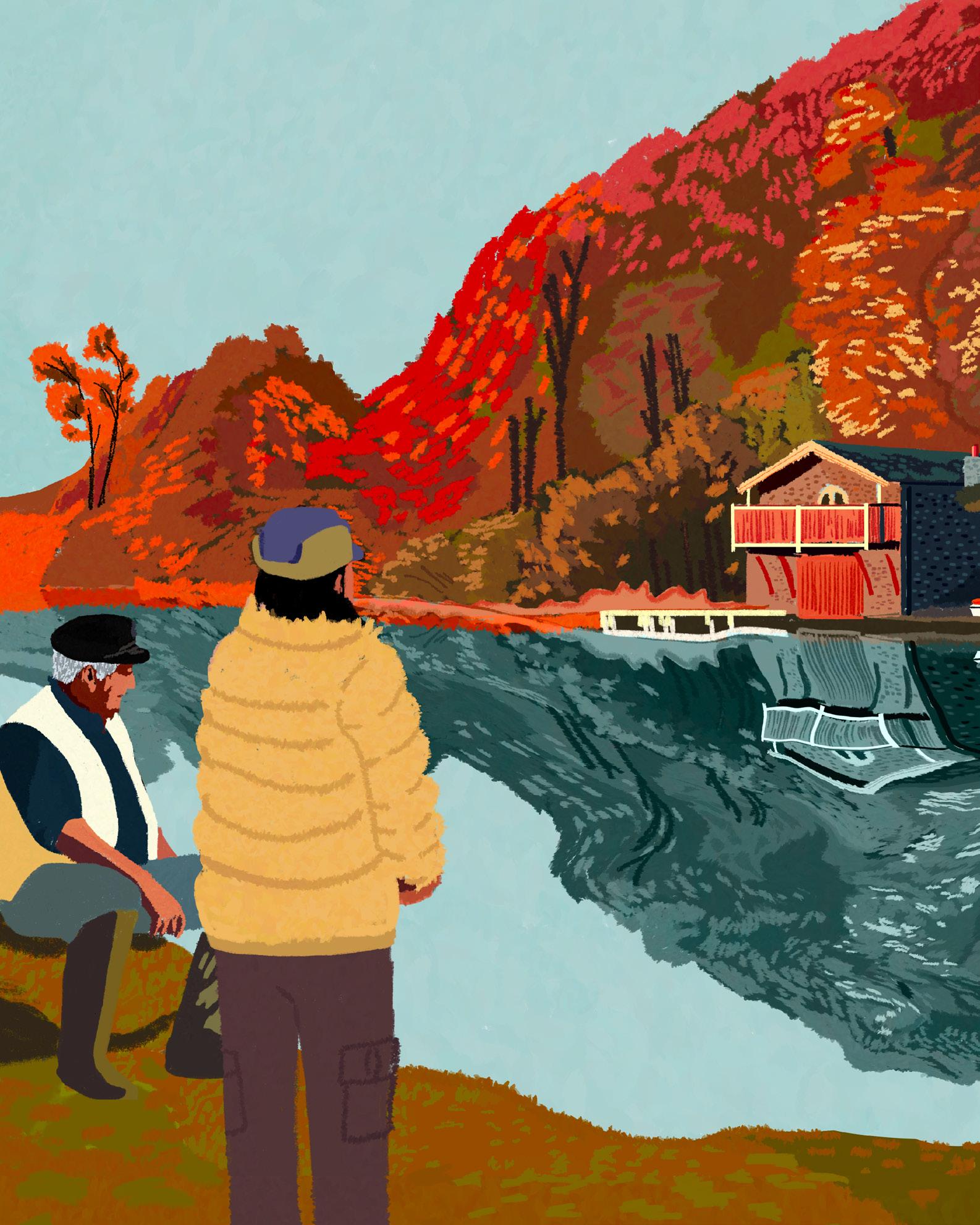
“It is helpful to ask yourself why you want to revisit a destination,” advises Chloe. “Is it because you genuinely love the experience each time you go, or is it because you feel safe and confident, and the thought of somewhere new is somewhat terrifying? If that is the case, then ponder on the question, ‘If I were to try somewhere new, could I also feel safe and confident there?’ After all, the place you visit frequently was once a new experience.”
Revisiting a place you loved as a child can be a wonderful experience, but it has the potential to be less so. “When we return to a place, we might be trying to recreate old feelings, or relive our youth. It can be a disappointment to revisit a childhood memory when we are looking through the lens of a cynical adult,” says Georgina.
“Instead of revelling in the carefree joy of a child, we notice the chill of the sea, and the cost of the ice cream. This can have a knock-on impact on how we see ourselves. Suddenly we notice that we are older. If we’re feeling content with our lives, then we might just look back fondly on earlier holidays. But if we’re unhappy or things aren’t quite right, then it can highlight our discontent.”
That’s not to say you should avoid places you loved as a child. Revisiting the Lancashire seaside town of Blackpool as an adult is something I really enjoy – it’s fun to ride the rollercoasters I adored when I’d visit here growing up, or to lose all my change playing silly arcade games. I find visiting with friends helps me appreciate it in a new way, while enjoying some of the same experiences, so it feels fresh and not just nostalgic.
One of the things I love about revisiting places is trying new things. The more you go somewhere, it becomes easier to go beyond the typical tourist attractions, and really get a >>>

feel for a place to see it from different angles. Each time I go to Ambleside, I hike up Loughrigg Fell, but taking different routes, so it combines familiarity with something new.
“Engaging in something which is challenging or novel affords us the opportunity to experience a sense of achievement and competence, even if it’s not done perfectly, which can be very beneficial for our emotional wellbeing,” says Stephanie. New experiences can be good for our brain health, as well as giving us the chance to discover things, or find out more about ourselves or the world we live in.

“There are ways to experience the same place with greater curiosity,” Stephanie suggests. This could be anything from staying in a different area, or adding new sights or activities to your itinerary, through to allocating a day of exploring

without a plan, simply allowing the day and the changing streets to be a guide. Even going to your favourite restaurant, you could try something different – I am eating my way through the menu at Zeffirellis, enjoying something new each time.
This way, you’re getting both the benefits of returning to
somewhere special alongside the boost of trying something new. You may well find that trying new things in your favourite place also builds your appreciation for it even more. I love trying different places in and around Ambleside – it makes me feel a stronger connection to the area that keeps me coming back.
There are ways to experience the same place with greater curiosityChloe Gosiewski is a travel and professional marketing coach, helping people meet their goals. Visit the Life Coach Directory for more. Dr Stephanie Okwu is a counselling psychologist, with more than 10 years’ experience working in the NHS. Find her profile on the Counselling Directory.
Looking for support with your mental health? Here are some places that can help:
If you are in crisis and are concerned for your own safety, call 999 or go to A&E
Call Samaritans on 116 123 or email them at jo@samaritans.org
SANEline offers support and information from 4pm–10pm: 0300 304 7000 Mind
Mind offers advice Mon–Fri 9am–6pm, except bank holidays: 0300 123 3393. Or email: info@mind.org.uk
Switchboard
Switchboard is a line for LGBT+ support. Open from 10am–10pm: 0300 330 0630. You can email: chris@switchboard.lgbt
p16

CONNECT WITH A LIFE COACH
Learn more about life coaching and connect with a professional using lifecoach-directory.org.uk
p29
MEN’S HEALTH
To learn more about men’s health – mental and physical –and to discover local support, visit uk.movember.com

p51
INFORMATION ON ANXIETY
Discover more about what it means to live with anxiety, common causes, and guidance at anxietyuk.org.uk
• Pass me on to a friend who might appreciate some articles.

• Get crafty and use me for a vision board or collage.
• Keep me on a coffee table to pick up when you need a boost
• Remember I’m 100% recyclable, so pop me in your recycling bin.
Our two-for-one tree commitment is made of two parts. Firstly, we source all our paper from FSC® certified sources. The FSC® label guarantees that the trees harvested are replaced, or allowed to regenerate naturally. Secondly, we will ensure an additional tree is planted for each one used, by making a suitable donation to a forestry charity. Happiful is a brand of Memiah Limited. The opinions, views and values expressed in Happiful are those of the authors of that content and do not necessarily represent our opinions, views or values. Nothing in the magazine constitutes advice on which you should rely. It is provided for general information purposes only. We work hard to achieve the highest possible editorial standards, however if you would like to pass on your feedback or have a complaint about Happiful, please email us at feedback@happiful.com. We do not accept liability for products and/or services offered by third parties. Memiah Limited is a private company limited by shares and registered in England and Wales with company number 05489185 and VAT number GB 920805837. Our registered office address is Building B, Riverside Way, Camberley, Surrey, GU15 3YL.


